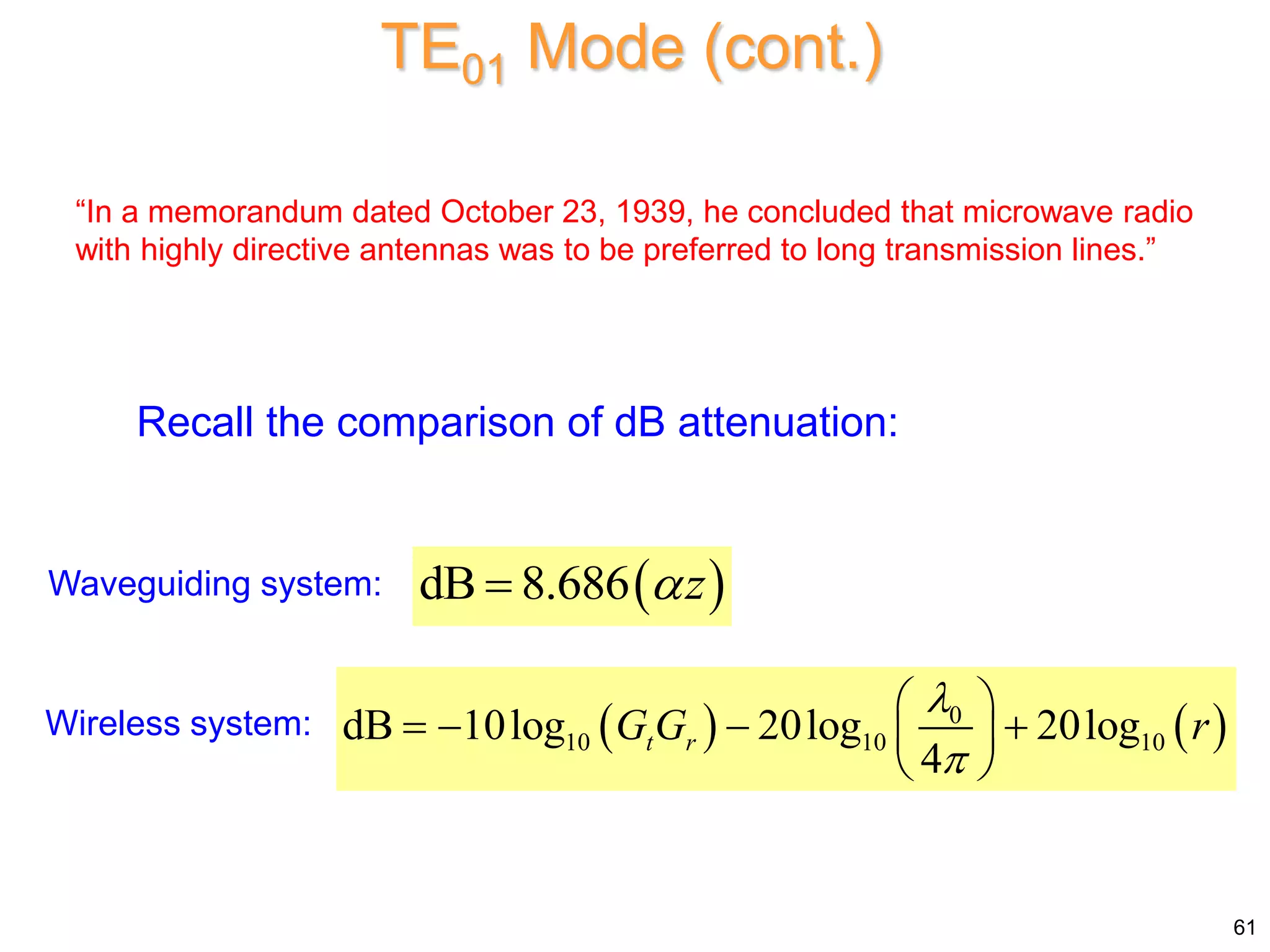1) Rectangular waveguides are commonly used for high power and low-loss microwave and millimeter-wave applications. They guide waves through a rectangular cross-section pipe.
2) Waves can propagate through rectangular waveguides in transverse electric (TE) or transverse magnetic (TM) modes. The TE and TM modes are derived from solving Maxwell's equations subject to the boundary conditions of the waveguide walls.
3) The lowest frequency at which a mode can propagate is called the cutoff frequency. The dominant TE10 mode has the lowest cutoff frequency, allowing it to propagate over the widest frequency range.
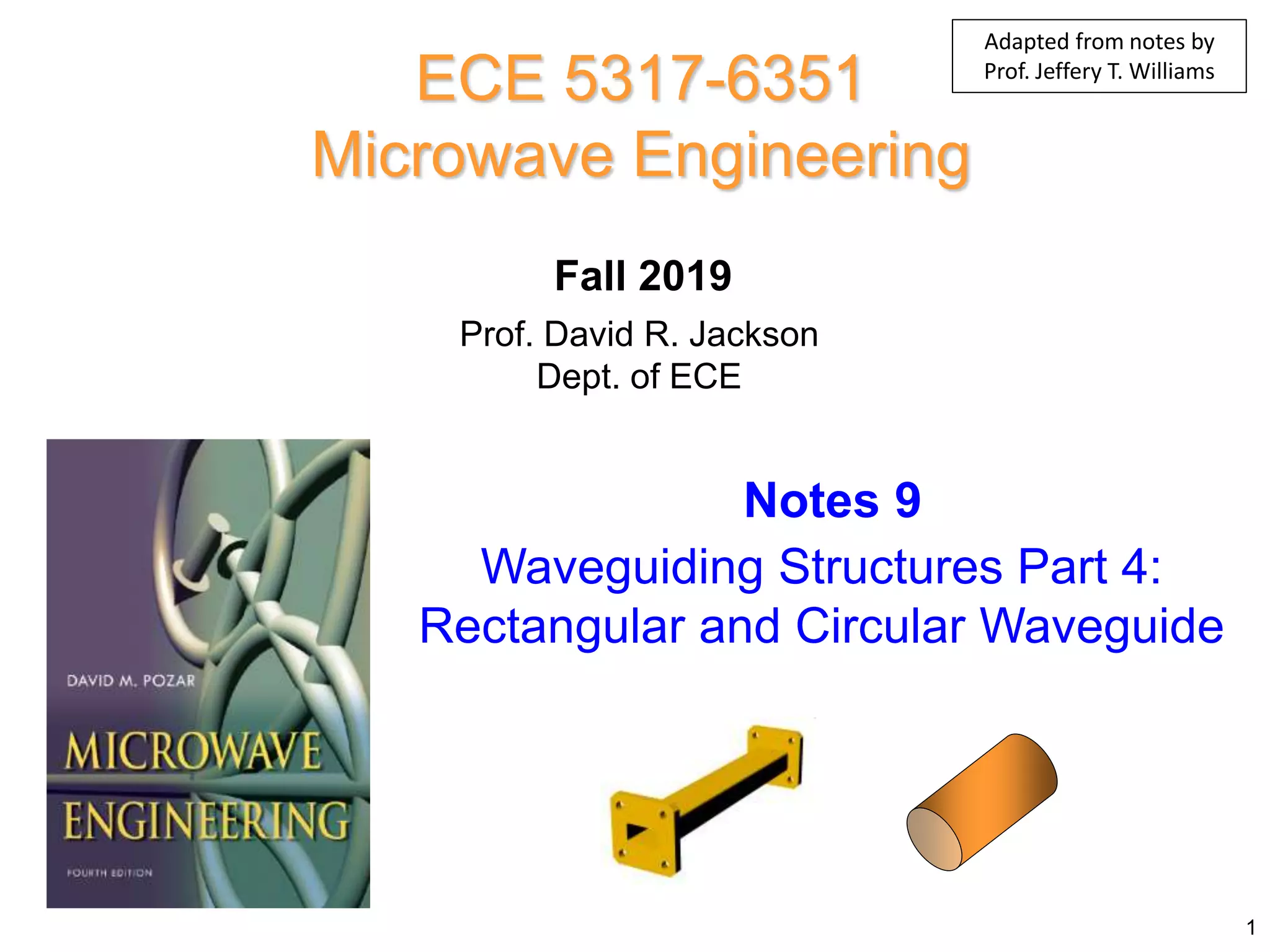
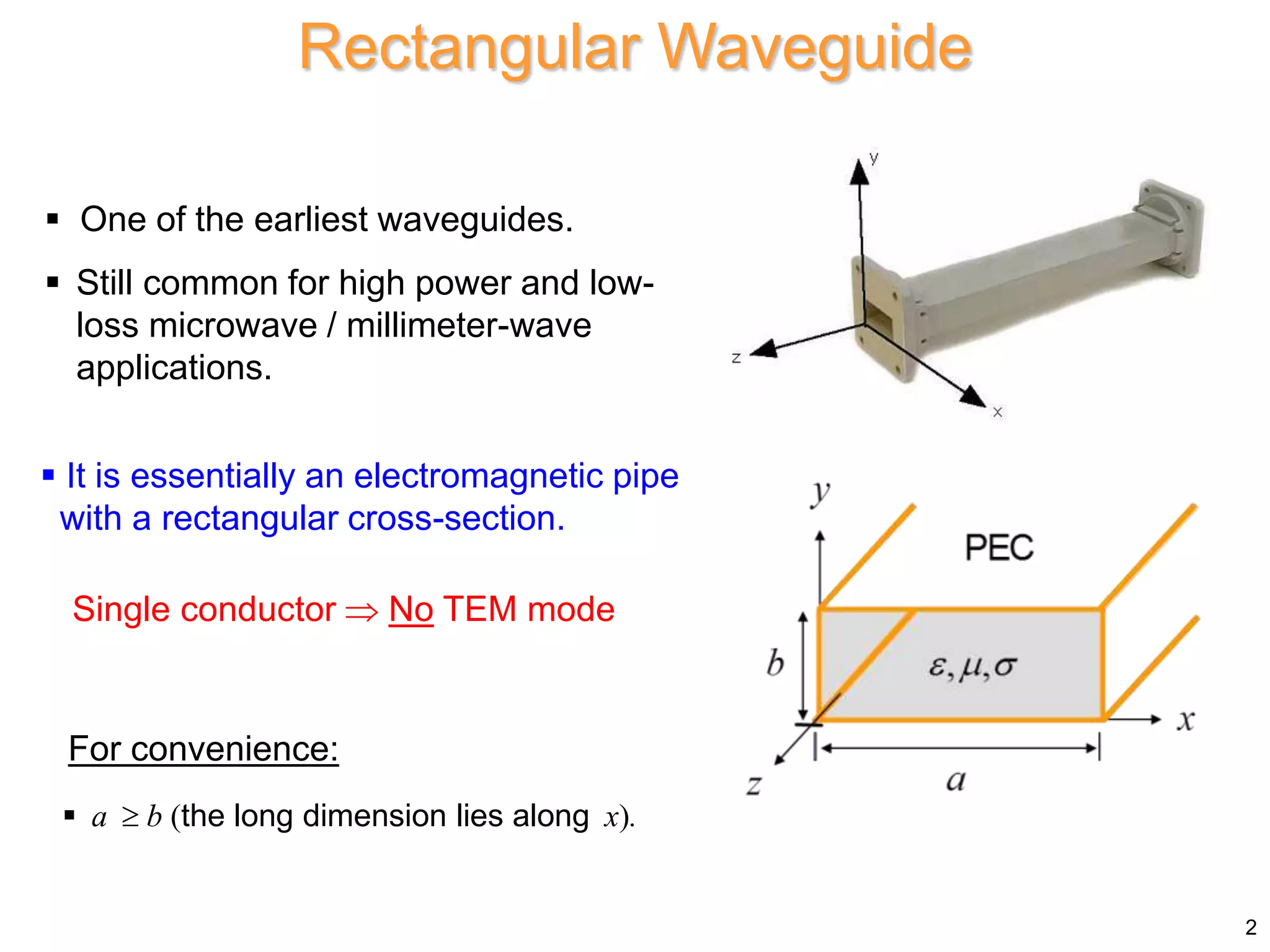
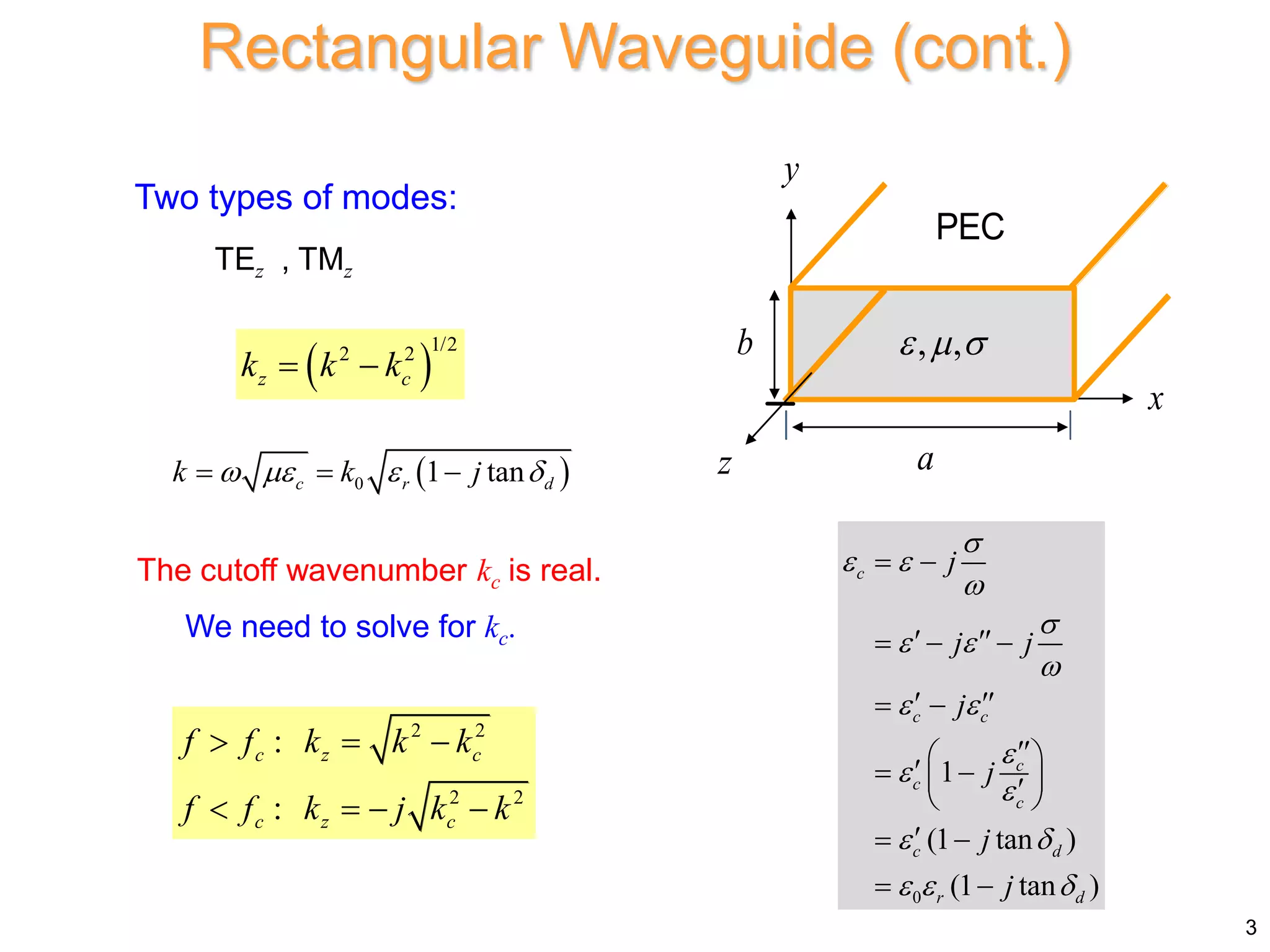
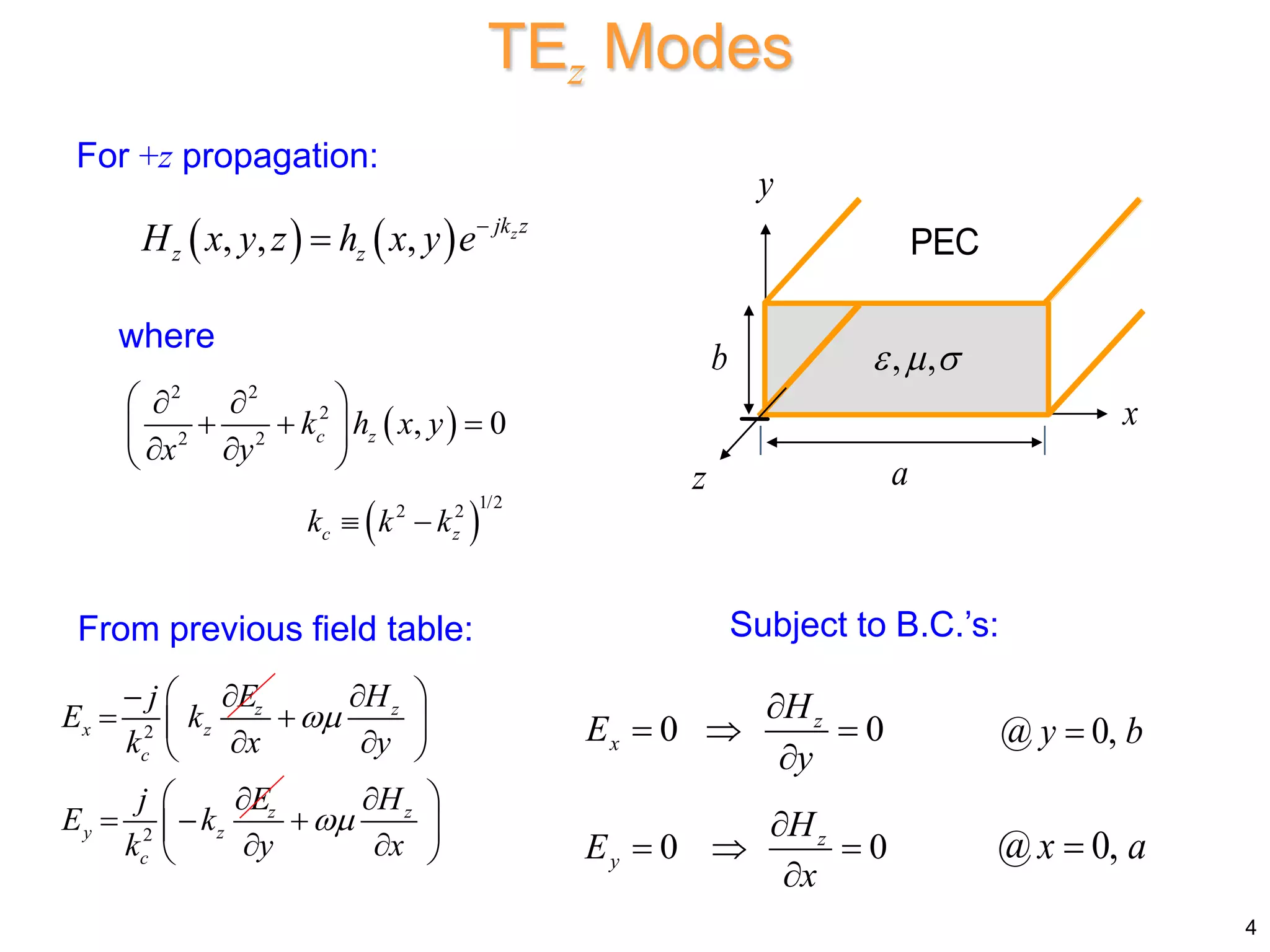
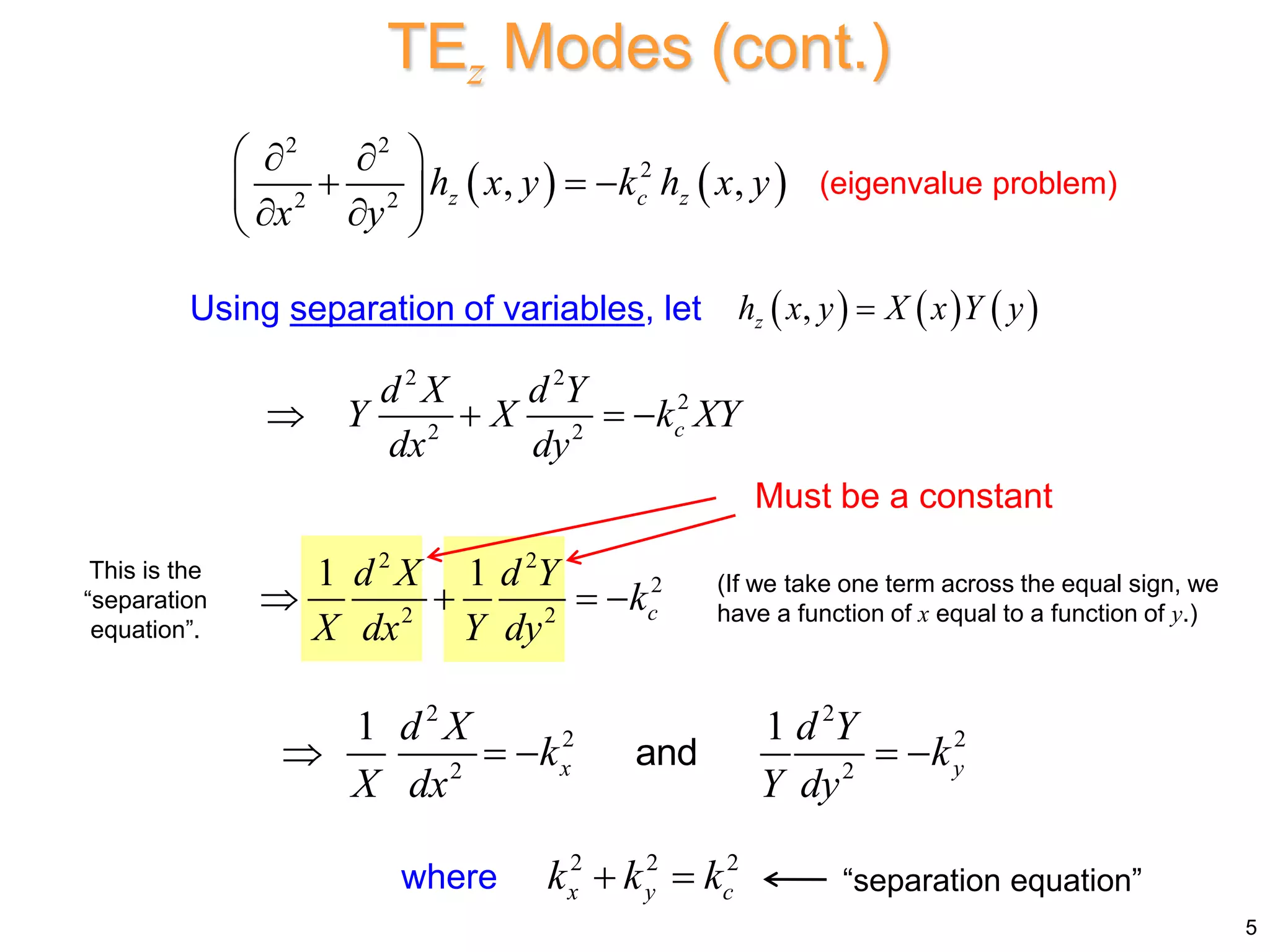
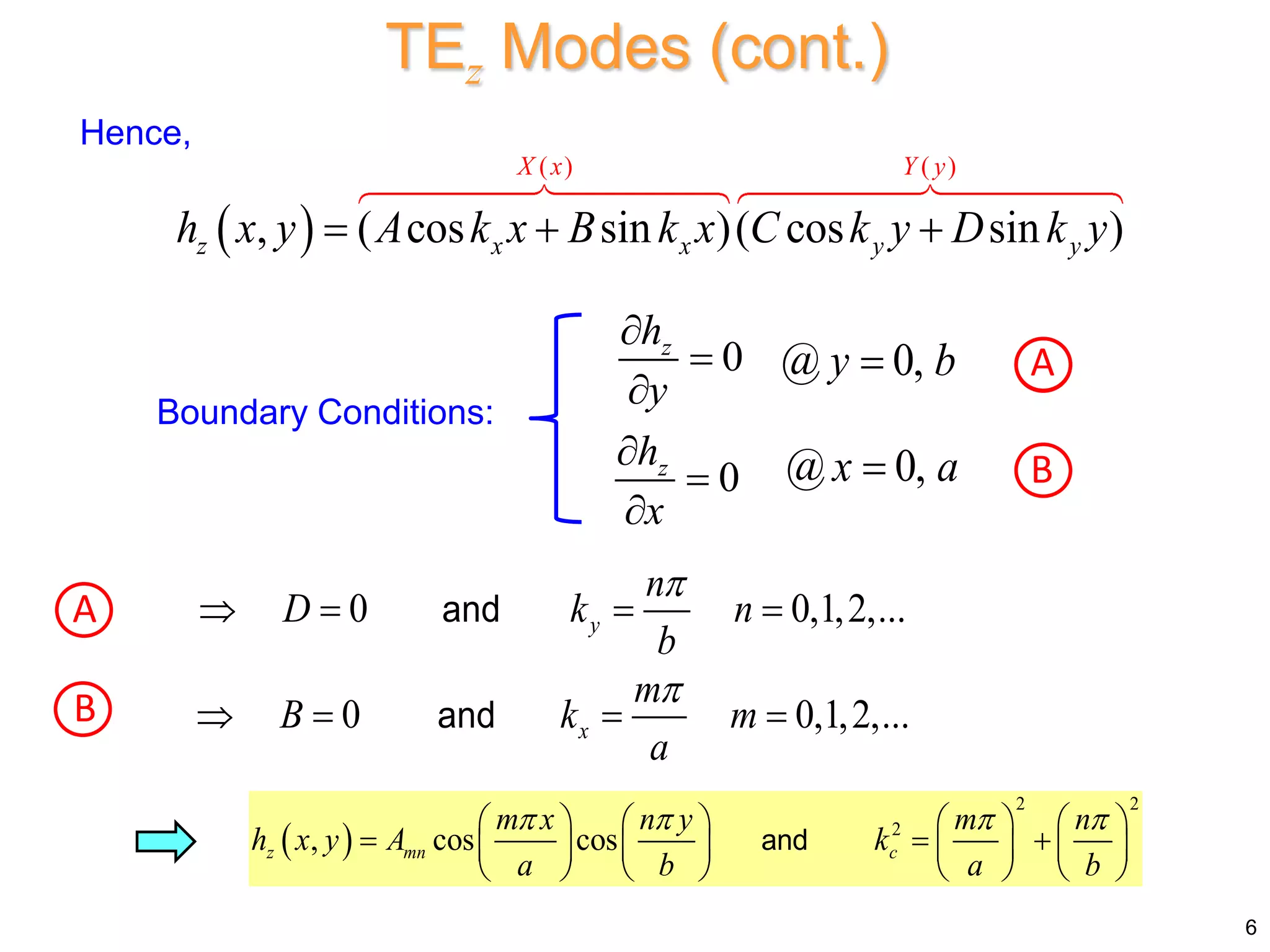
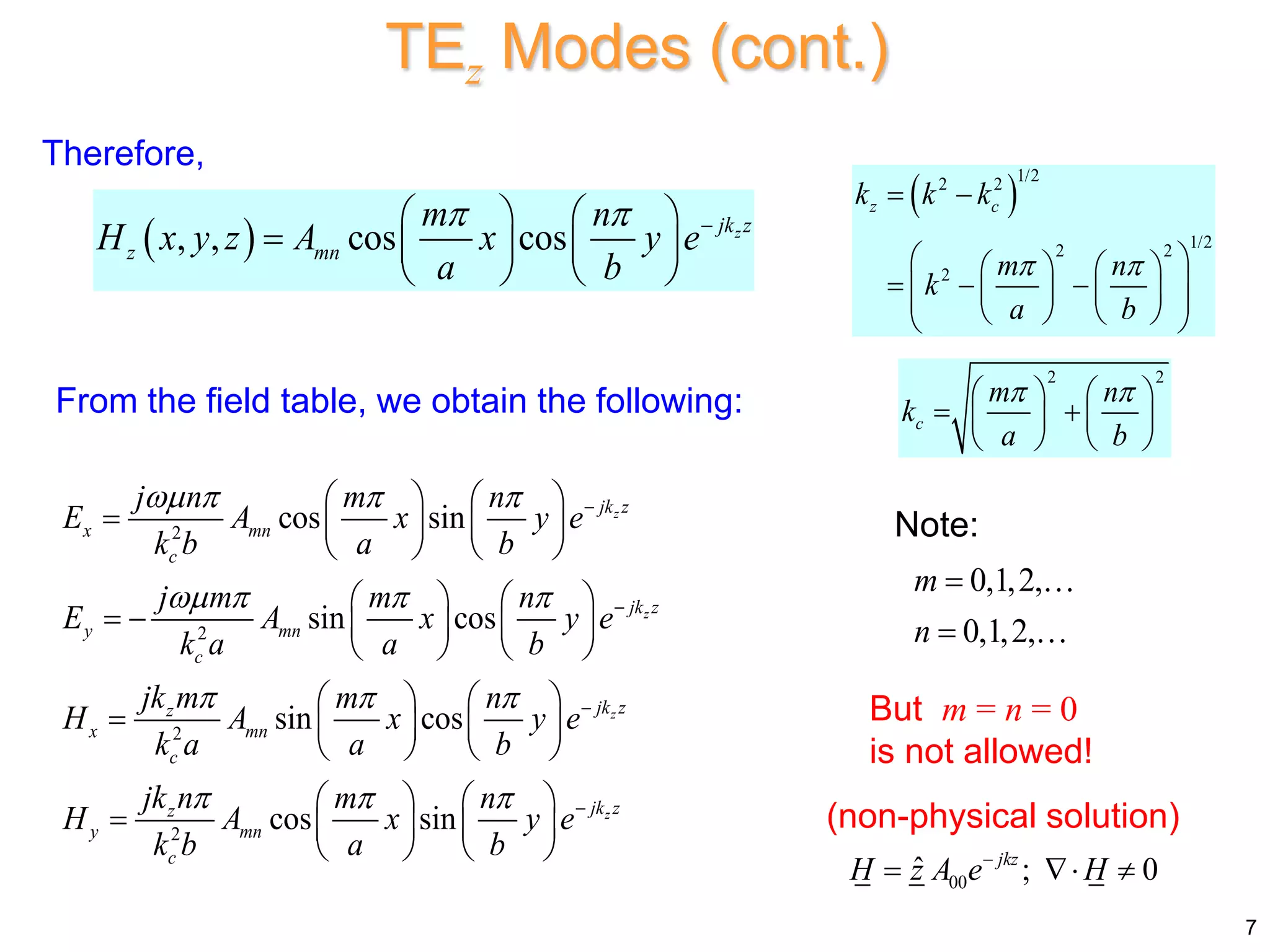
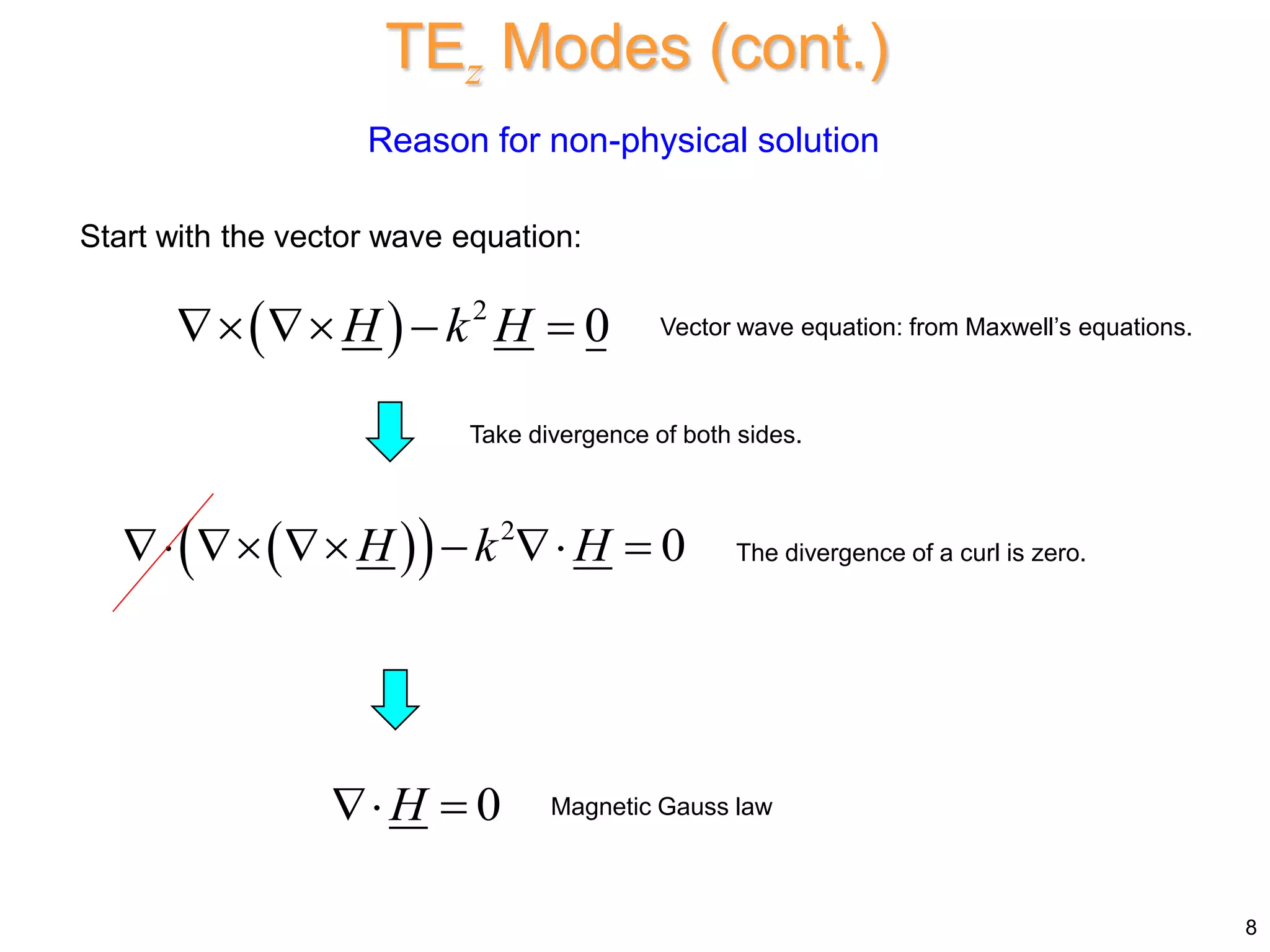
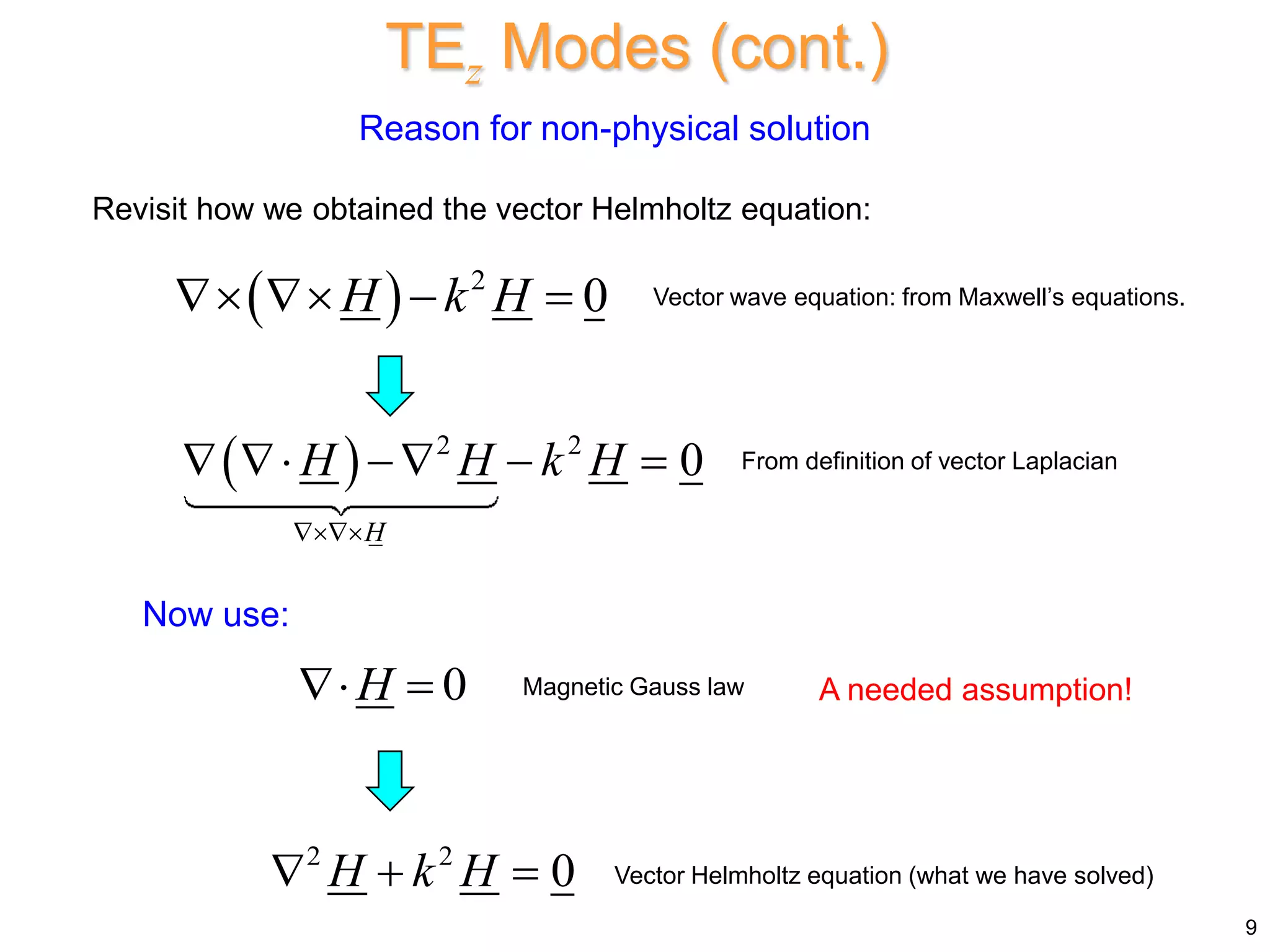

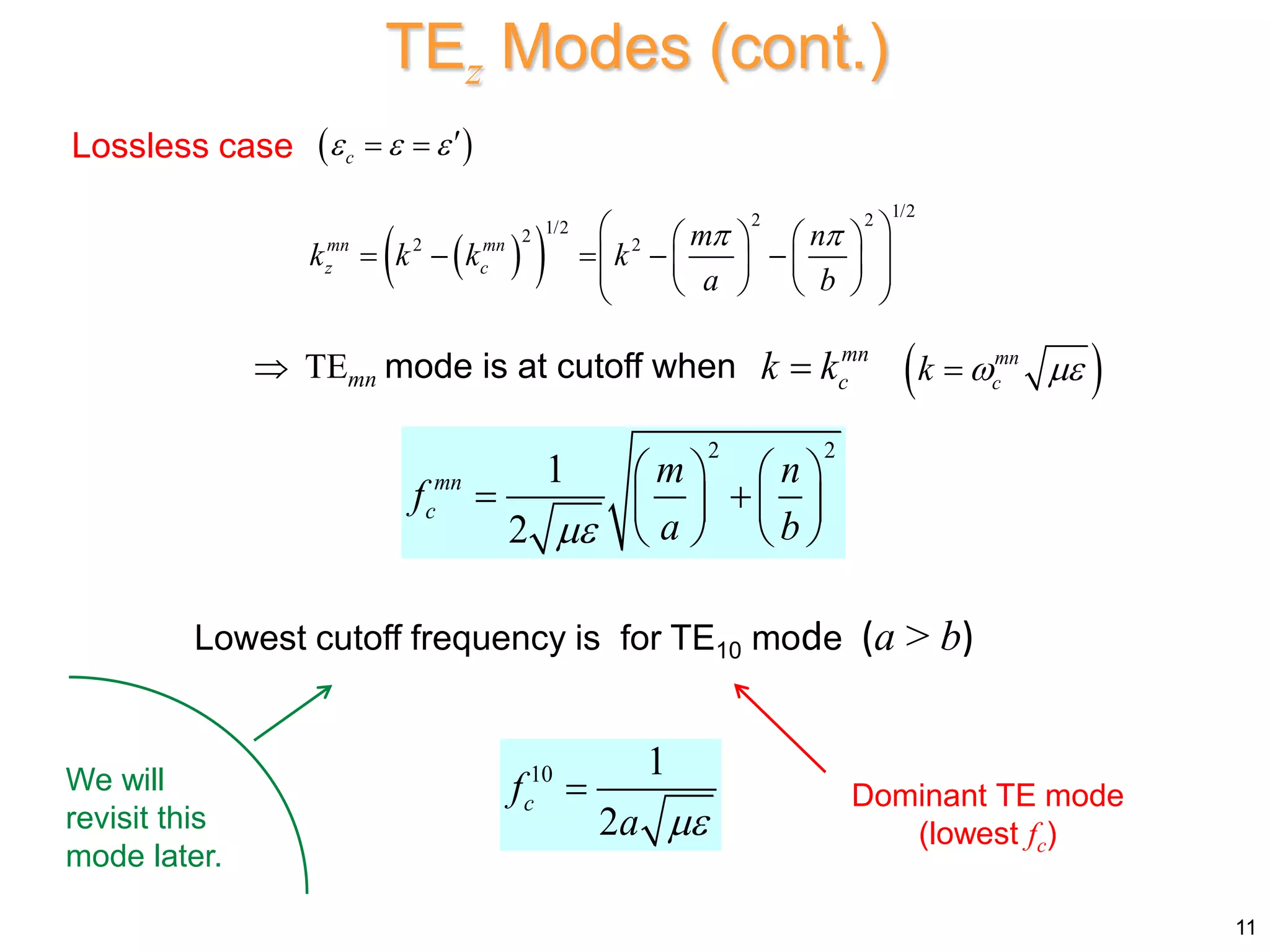
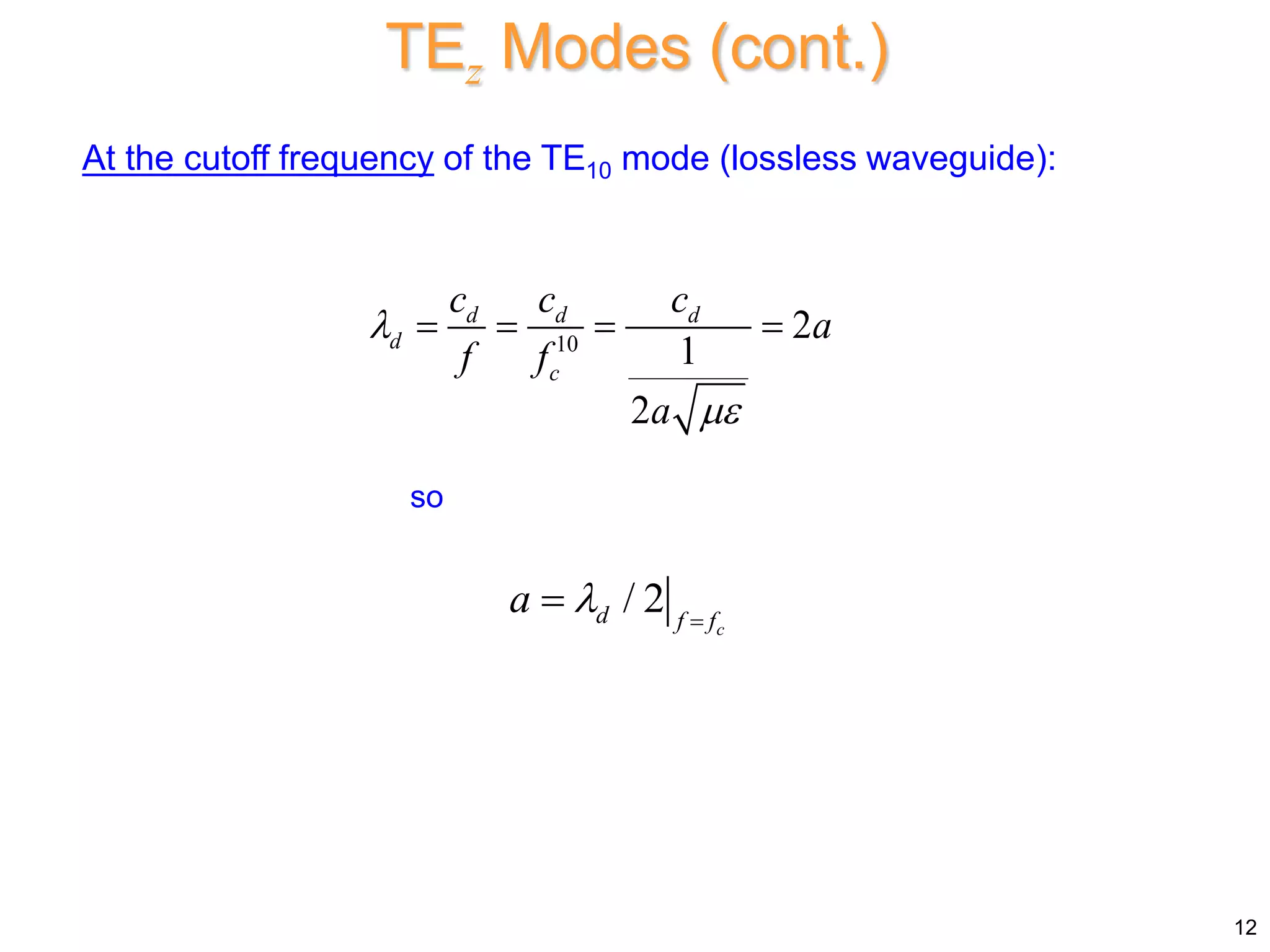
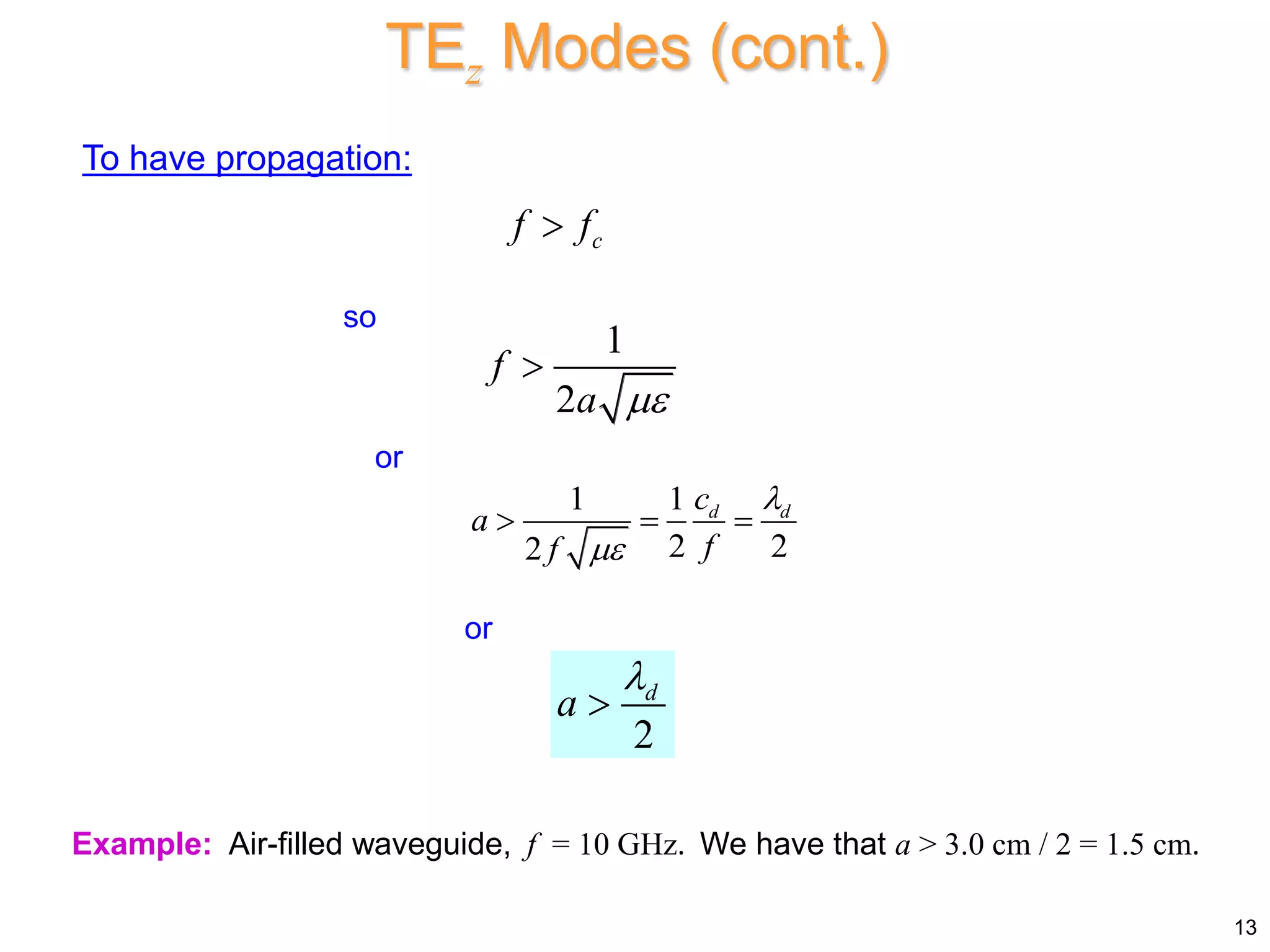
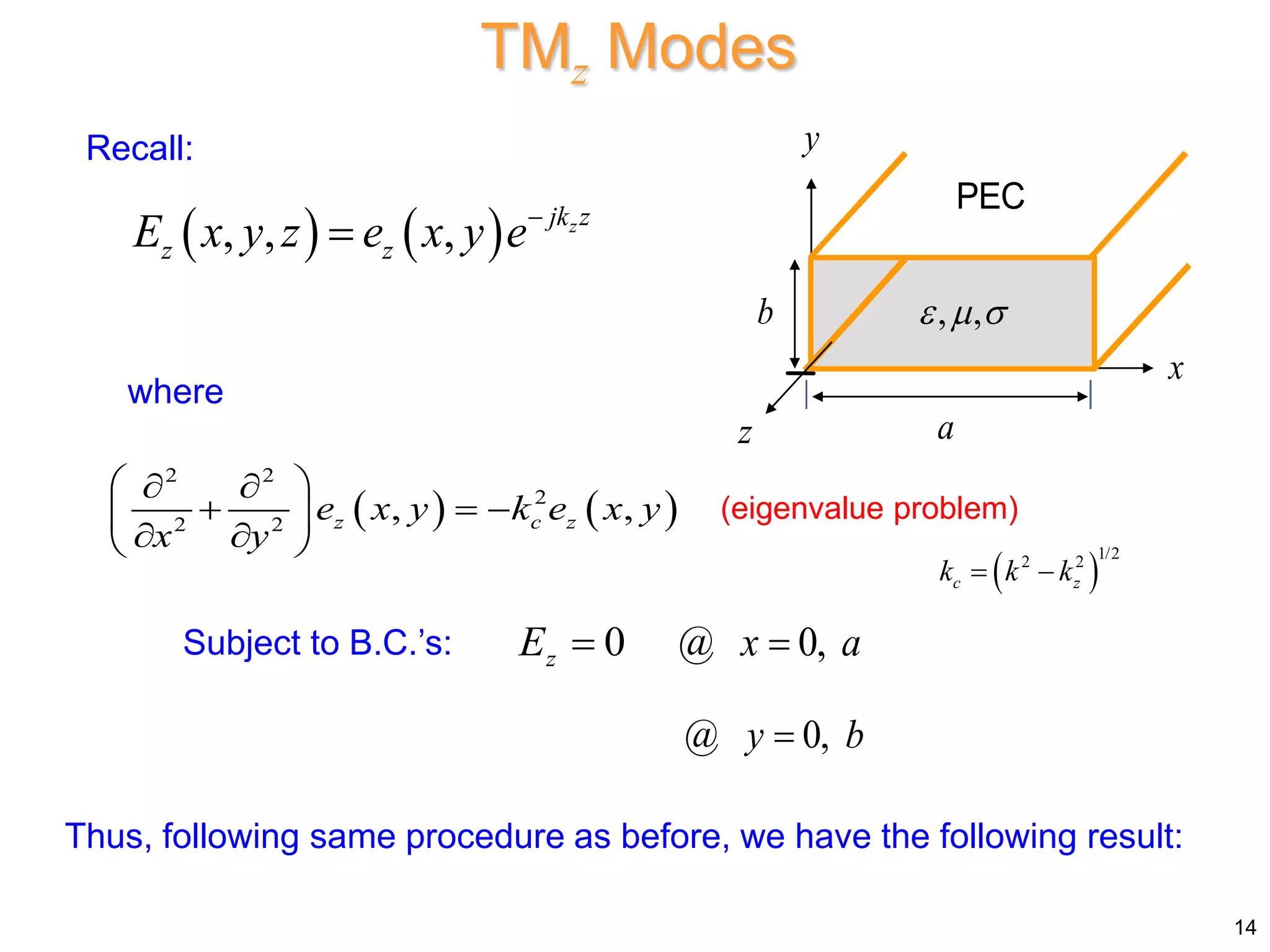
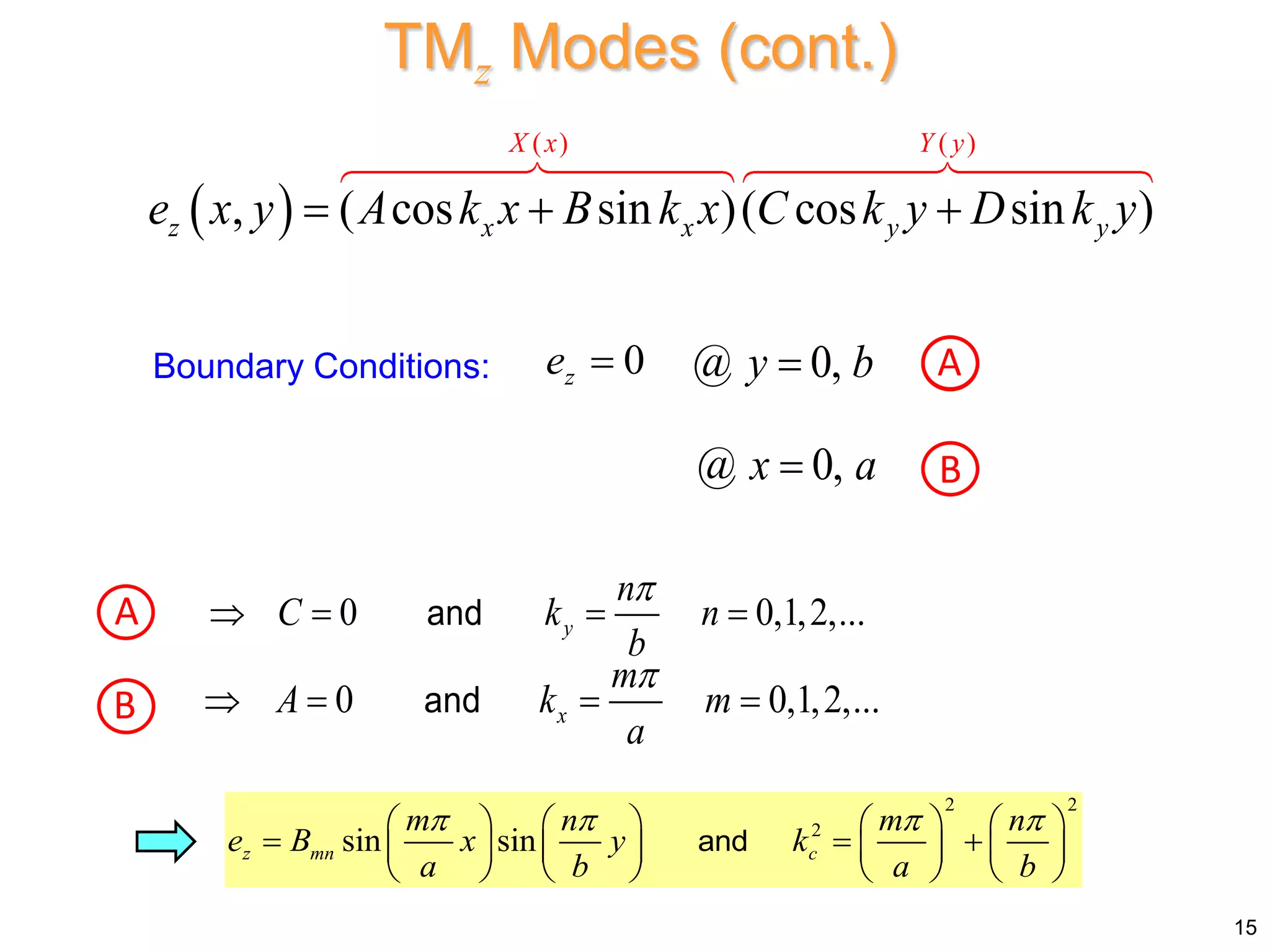
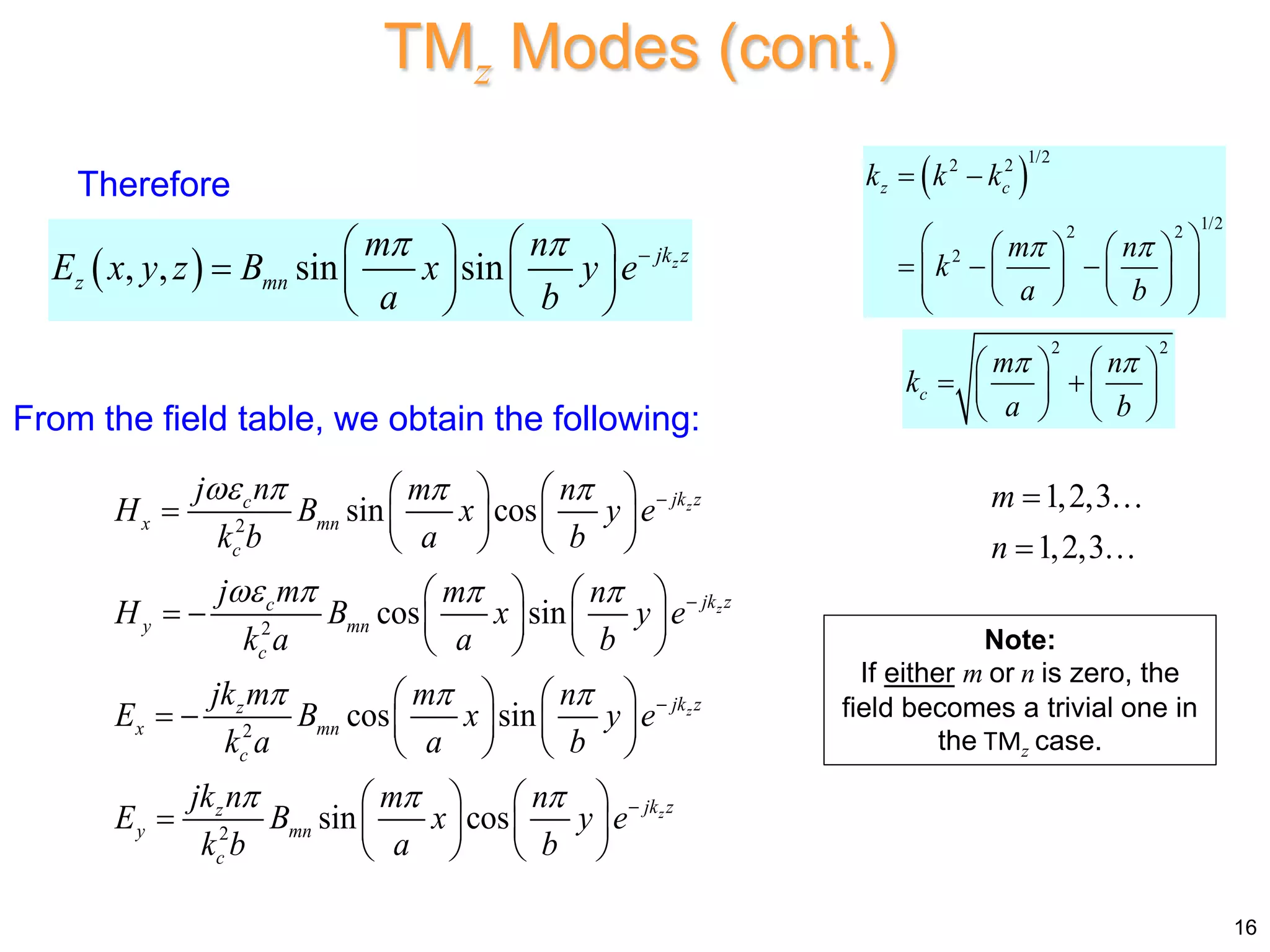


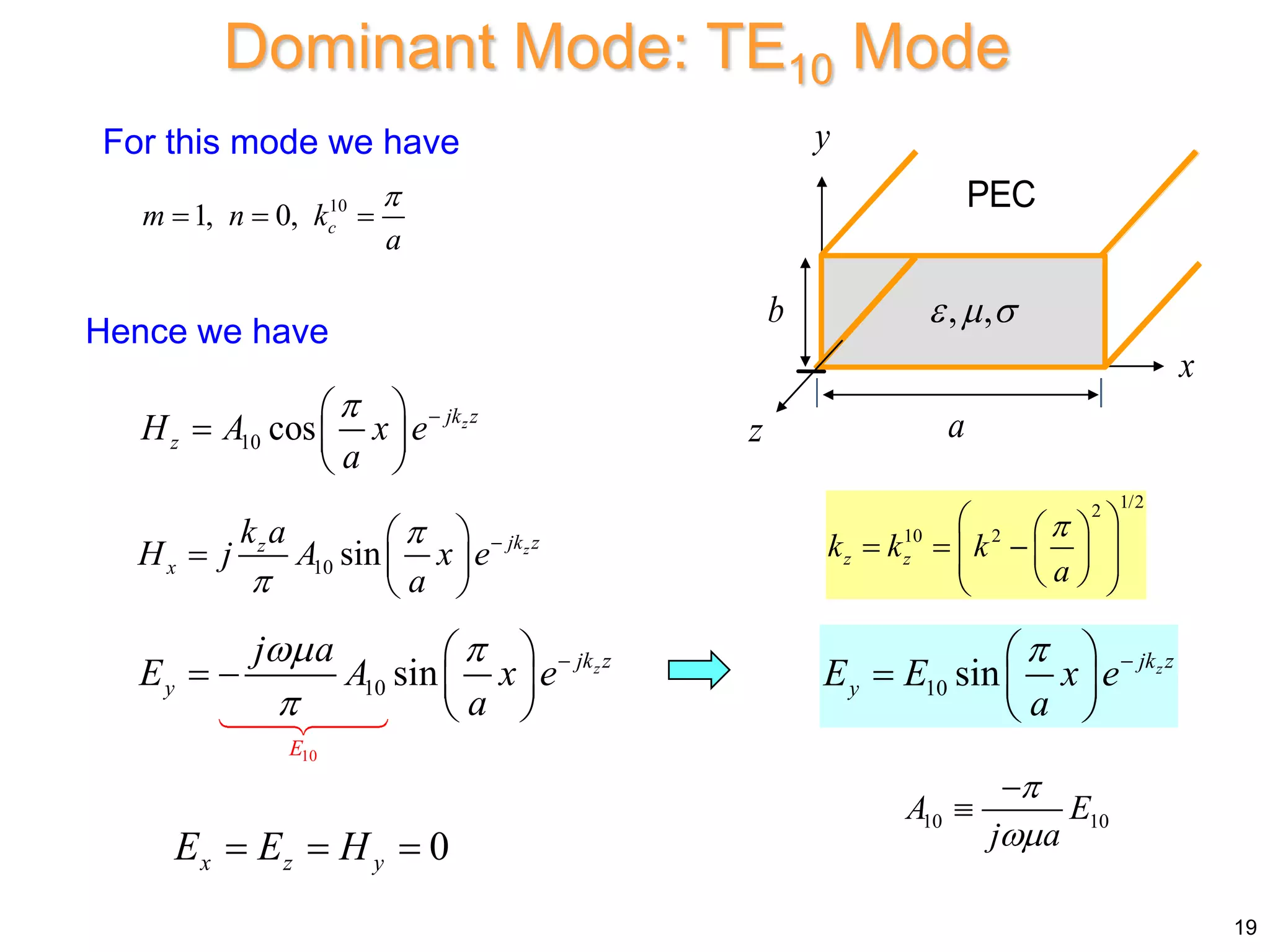
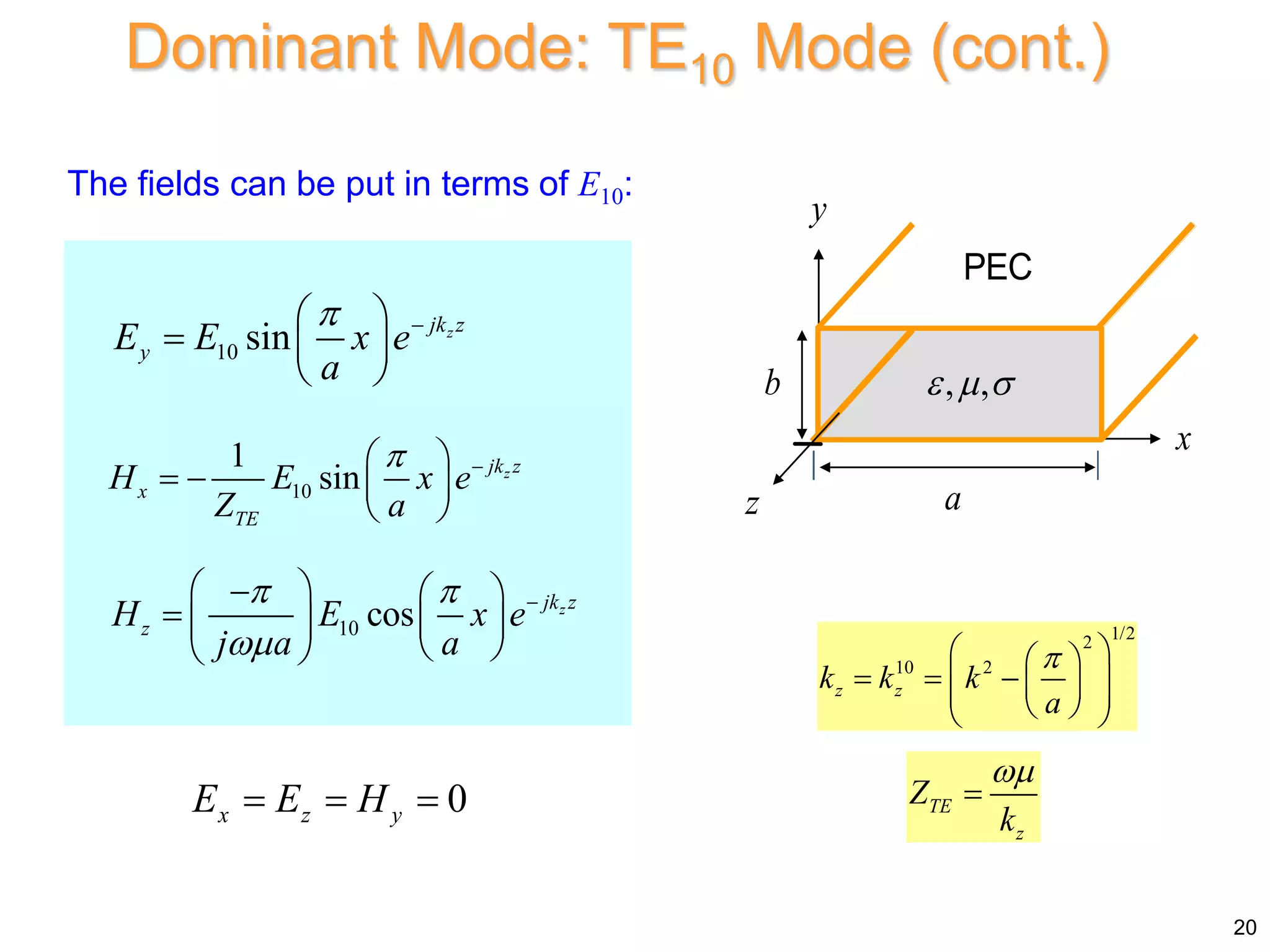
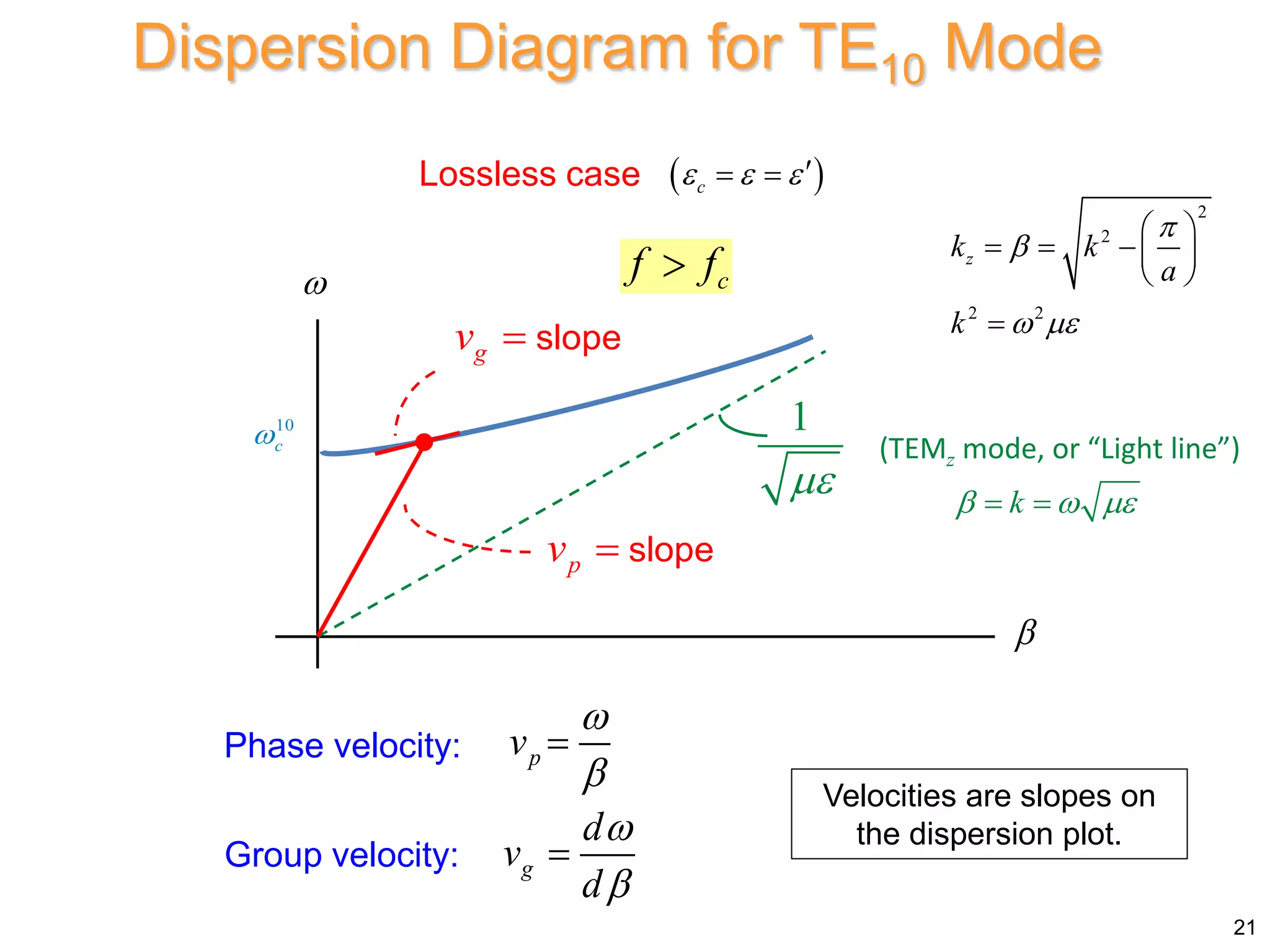
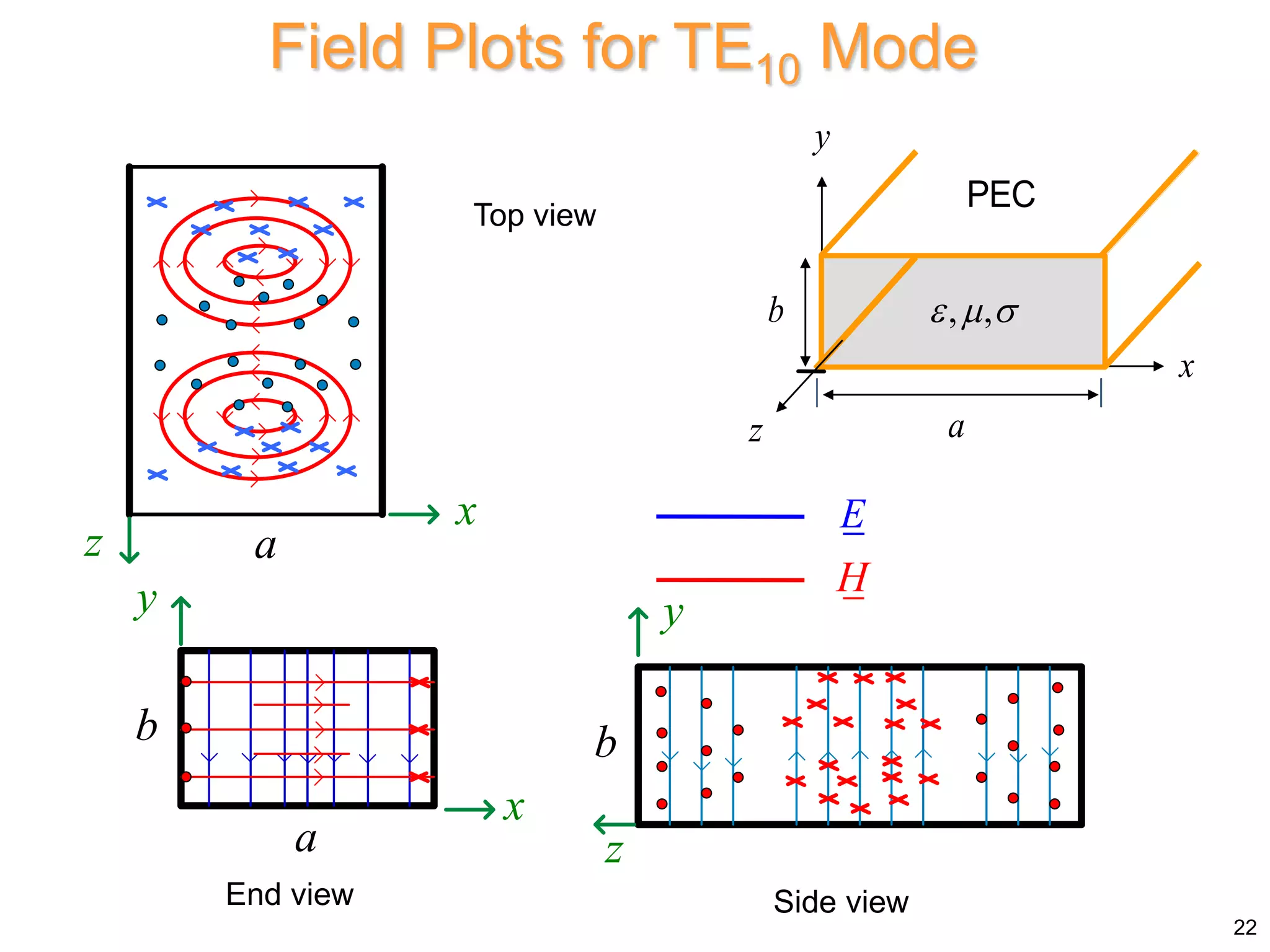
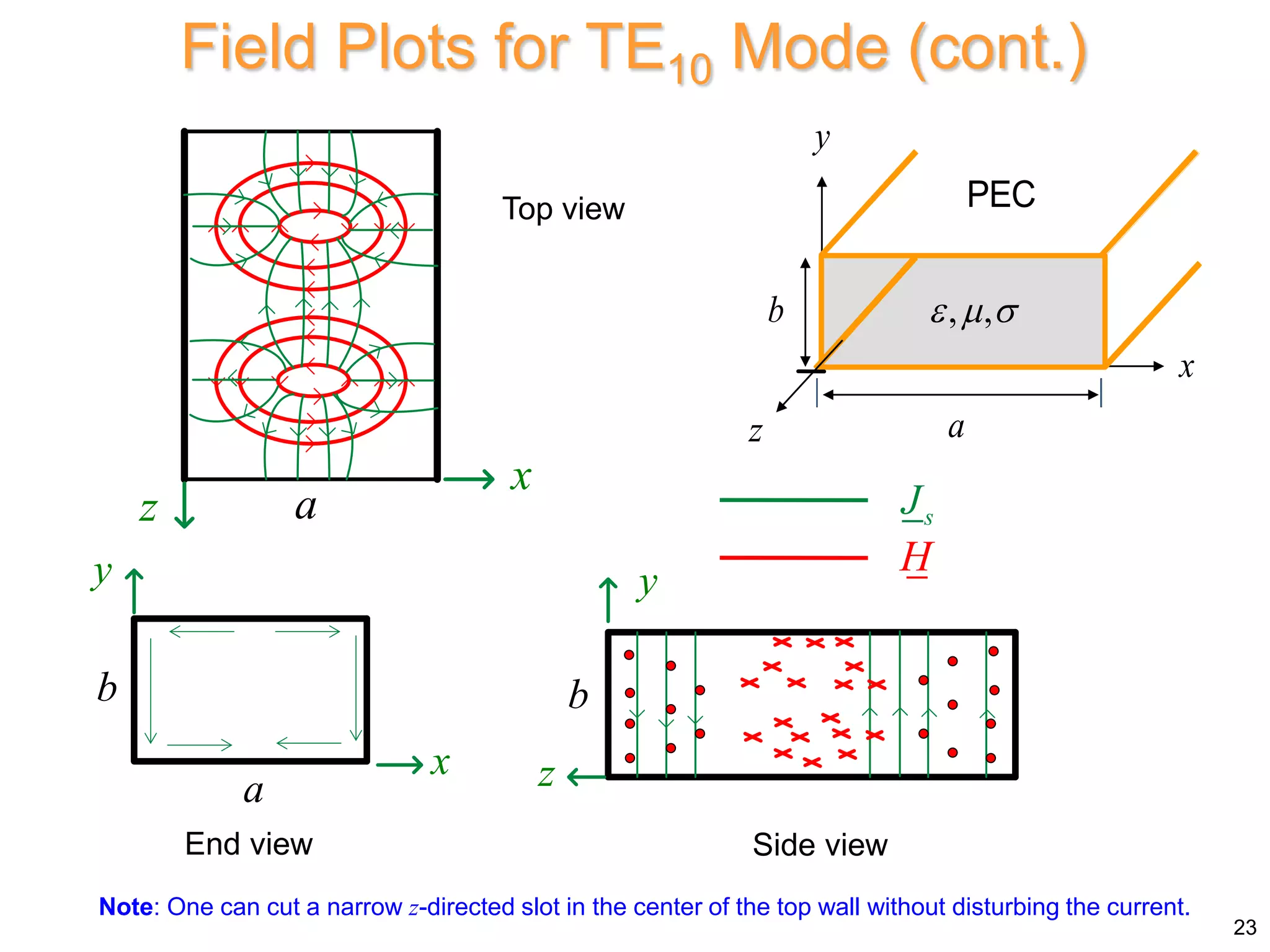
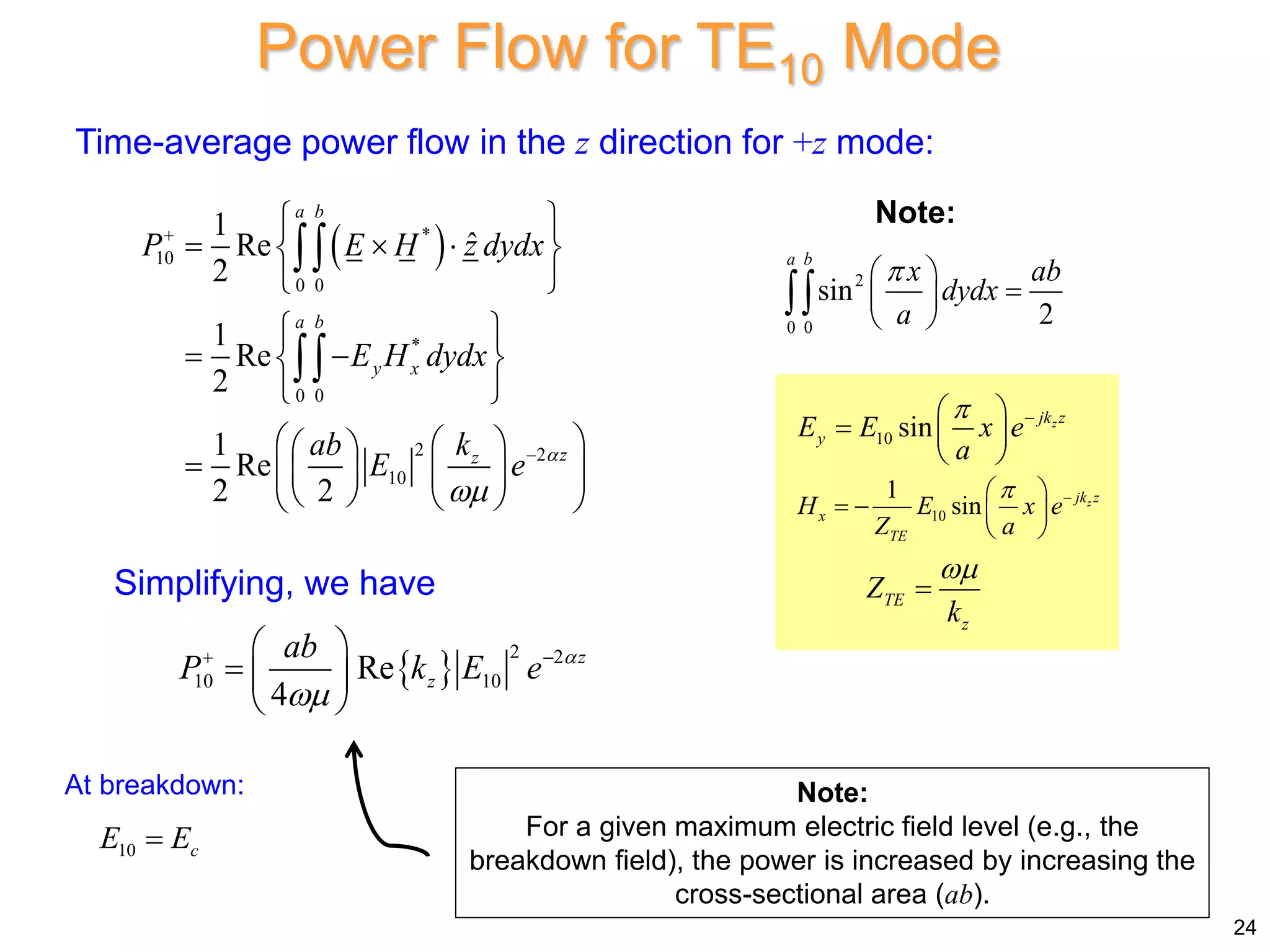
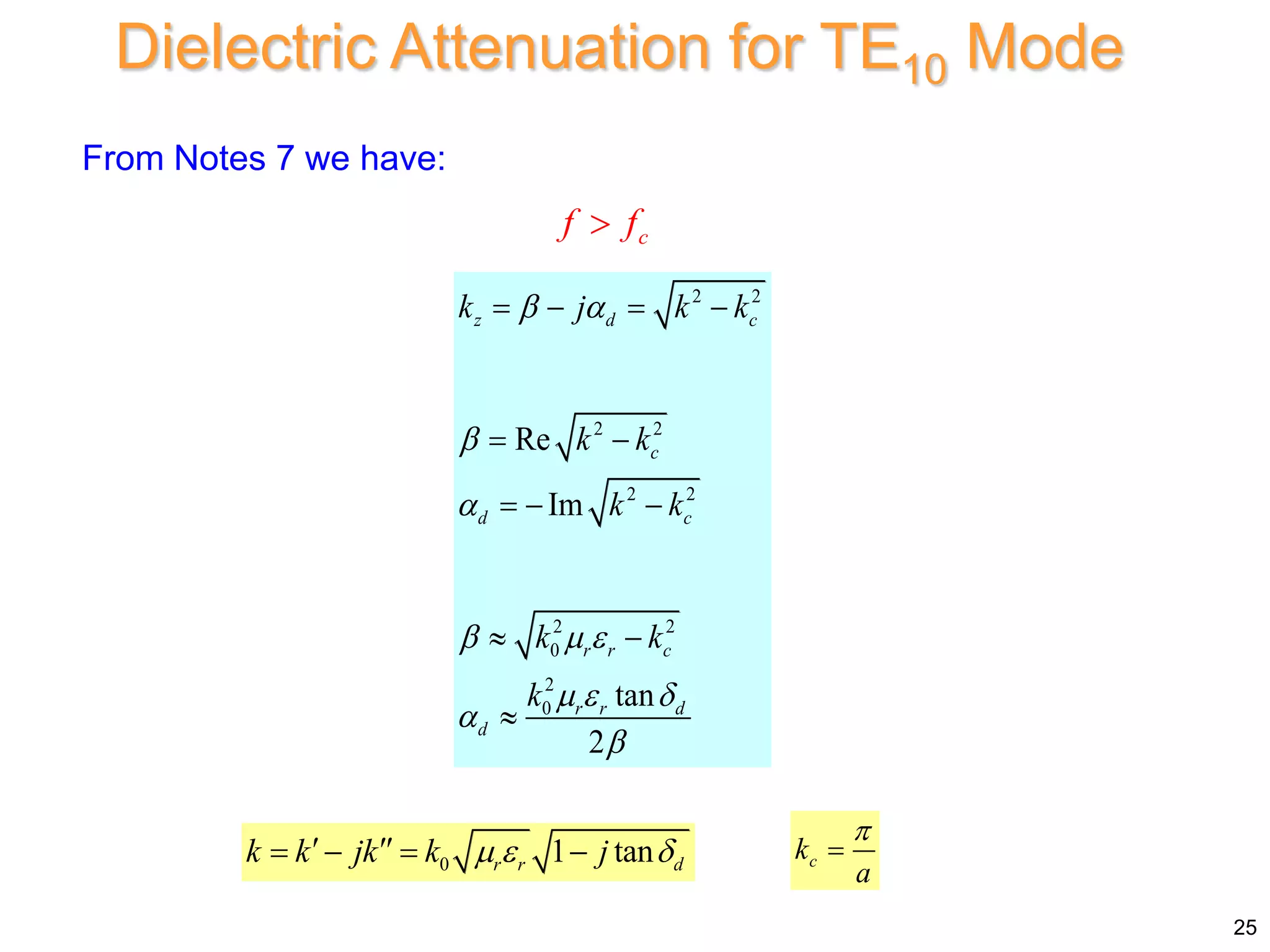
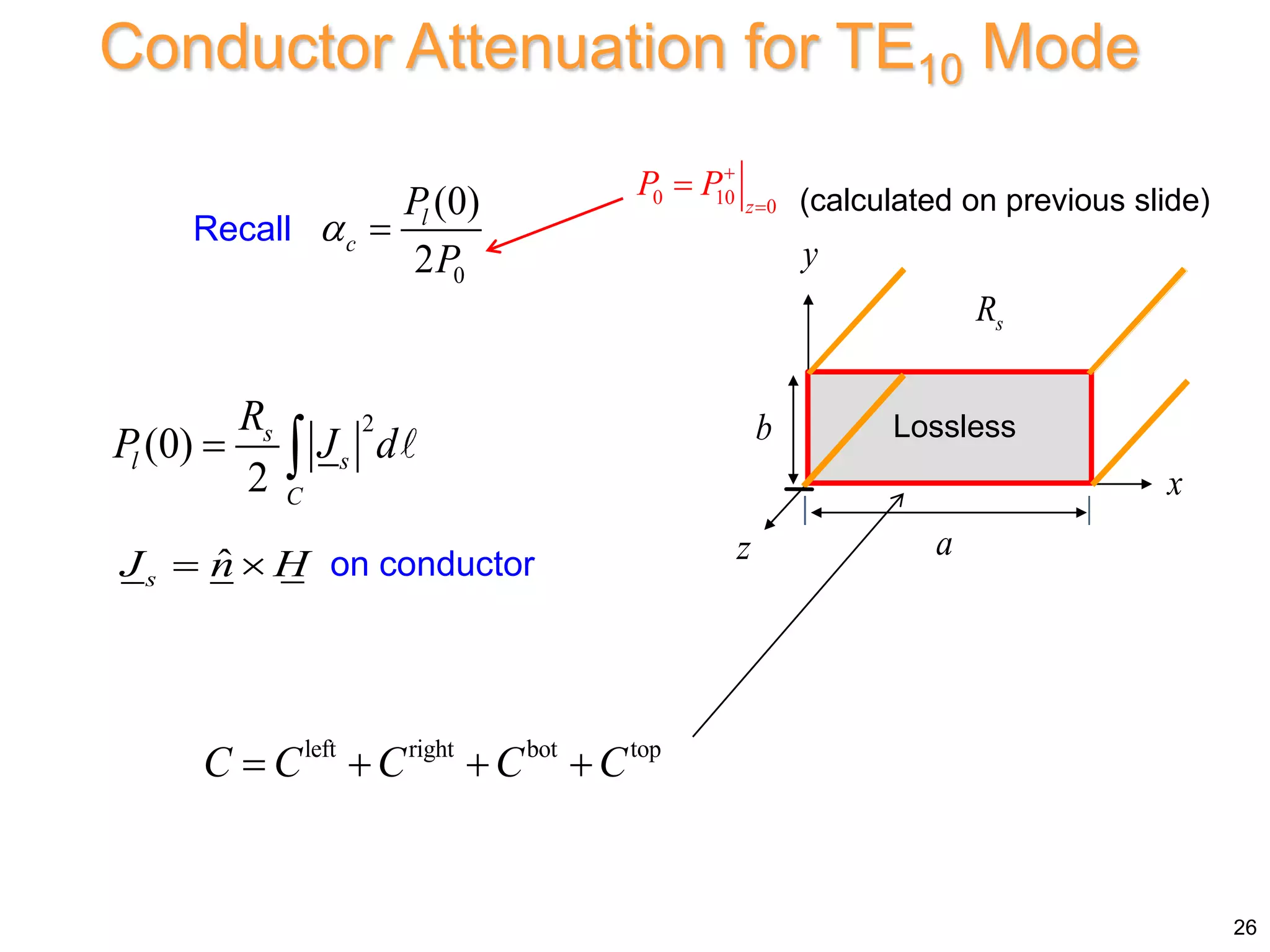
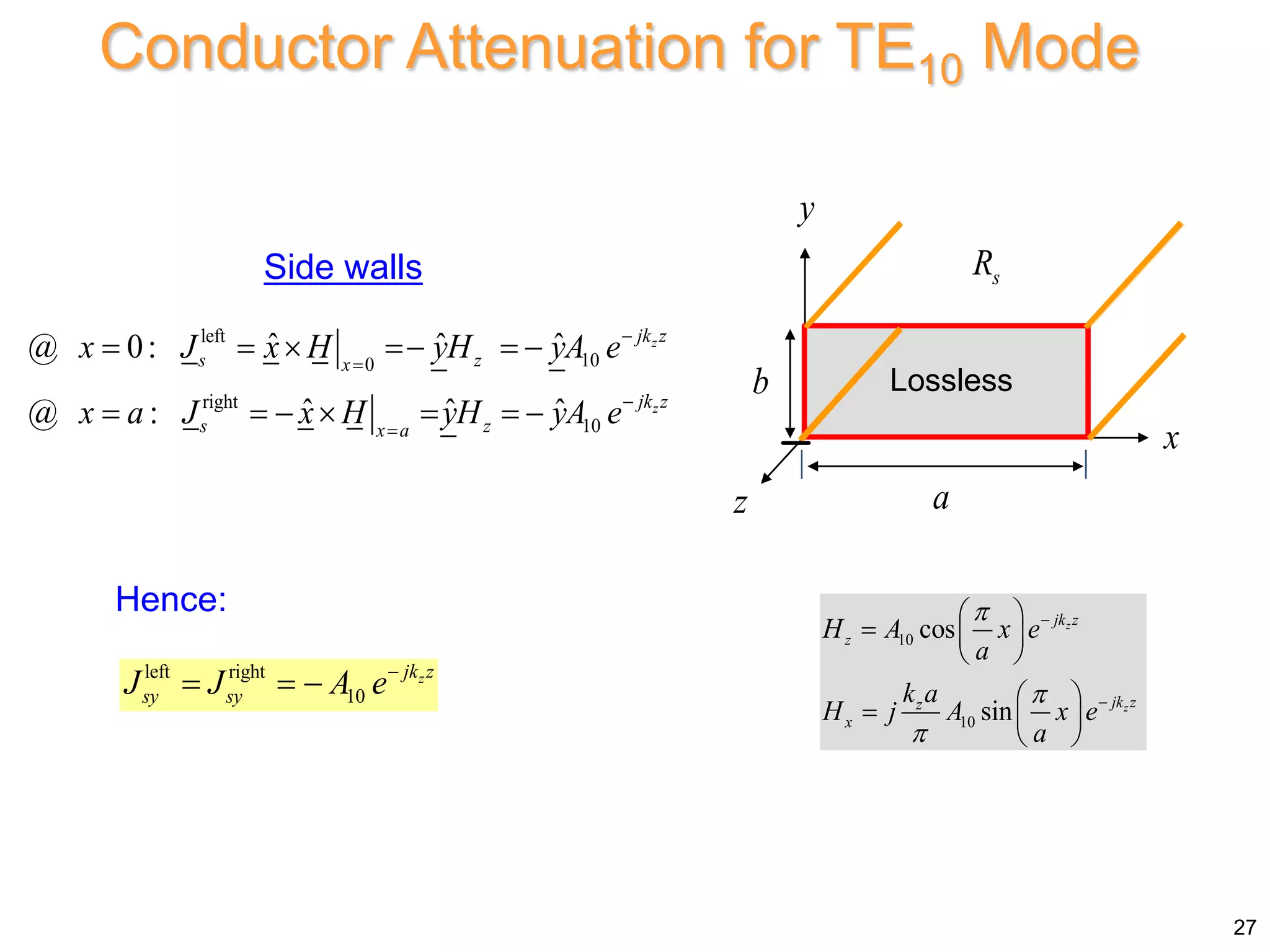
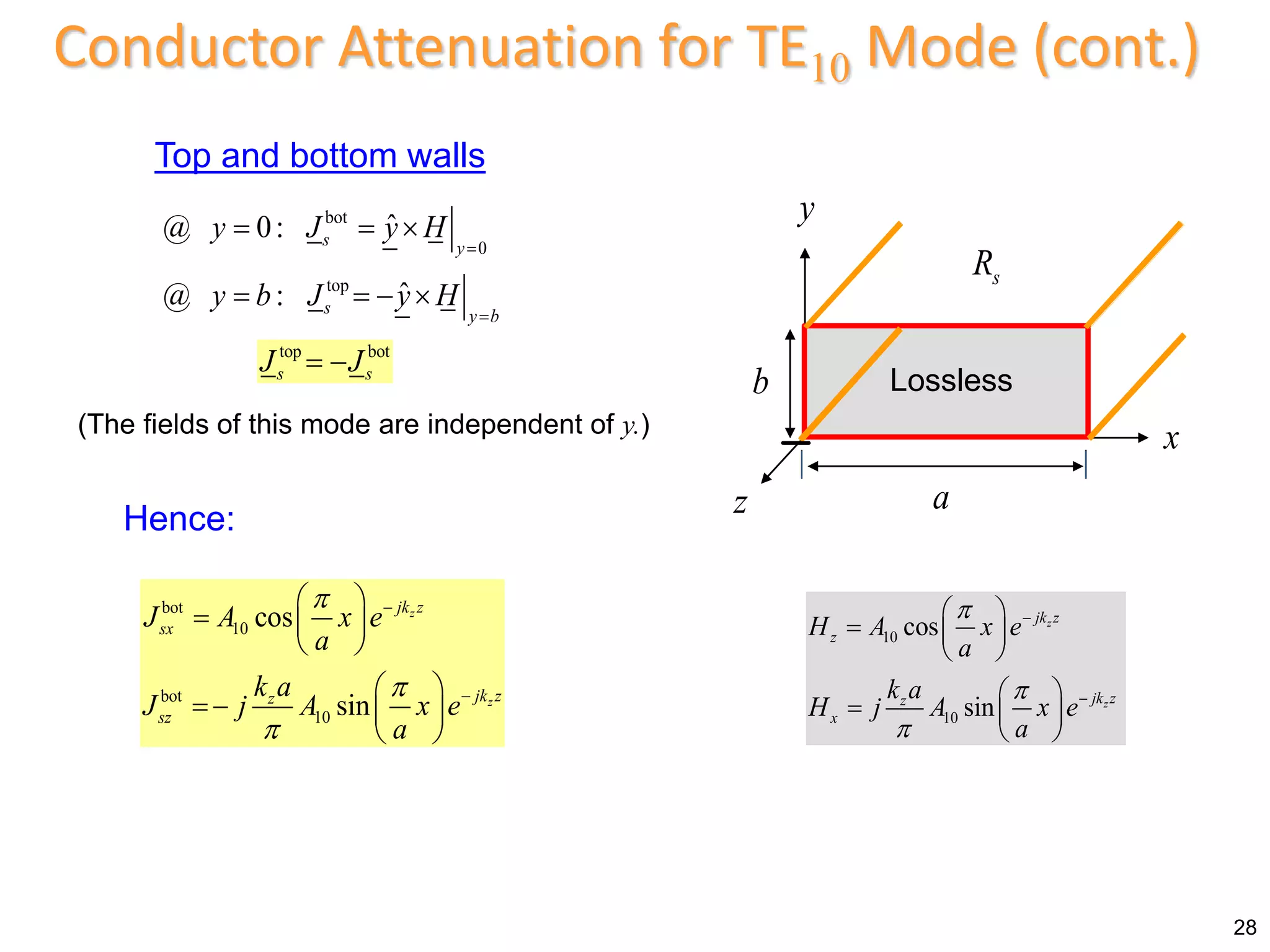
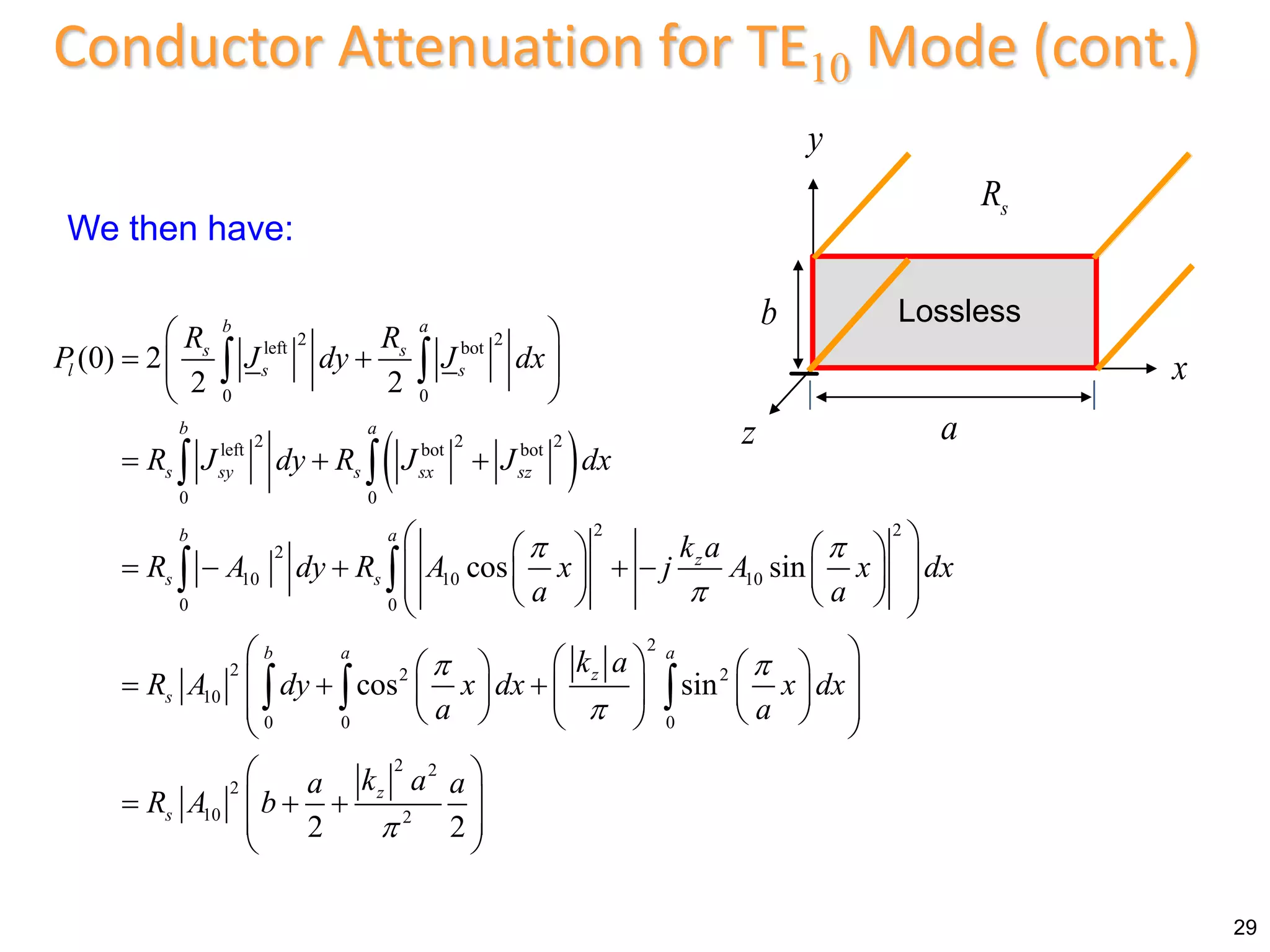
![2 3
2
10 2
(0)
2 2
l s
a a
P R A b
2 3 2
3
2 [np/m]
s
c
R
b a k
a b k
Attenuation for TE10 Mode (cont.)
2
0 10
4
ab
P E
0
(0)
2
l
c
P
P
Simplify, using 2 2 2
c
k k
10
c
k
a
Final result:
Assume f > fc
z
k
(The wavenumber is taken as that
of a guide with perfect walls.)
30
10 10
A E
j a
x
y
z a
b
s
R
Lossless](https://image.slidesharecdn.com/waveguidingstructurespart4rectangularandcircularwaveguide-230228092453-aa7027af/75/Waveguiding-Structures-Part-4-Rectangular-and-Circular-Waveguide-pptx-30-2048.jpg)
![
2 3 2
3
2 [np/m]
s
c
R
b a k
a b k
Attenuation for TE10 Mode (cont.)
31
x
y
z a
b
s
R
Lossless
2
2
1 2
1 [np/m]
1 /
s c
c
c
R f
b
b a f
f f
Two alternative forms for the
final result:
Final Formulas](https://image.slidesharecdn.com/waveguidingstructurespart4rectangularandcircularwaveguide-230228092453-aa7027af/75/Waveguiding-Structures-Part-4-Rectangular-and-Circular-Waveguide-pptx-31-2048.jpg)
![Attenuation for TE10 Mode (cont.)
7
2.6 10 [S/m]
Brass X-band air-filled waveguide
X : 8 12 [GHz]
band
(See the table on the next slide.)
32
a = 2.0 cm
(from the Pozar book)](https://image.slidesharecdn.com/waveguidingstructurespart4rectangularandcircularwaveguide-230228092453-aa7027af/75/Waveguiding-Structures-Part-4-Rectangular-and-Circular-Waveguide-pptx-32-2048.jpg)
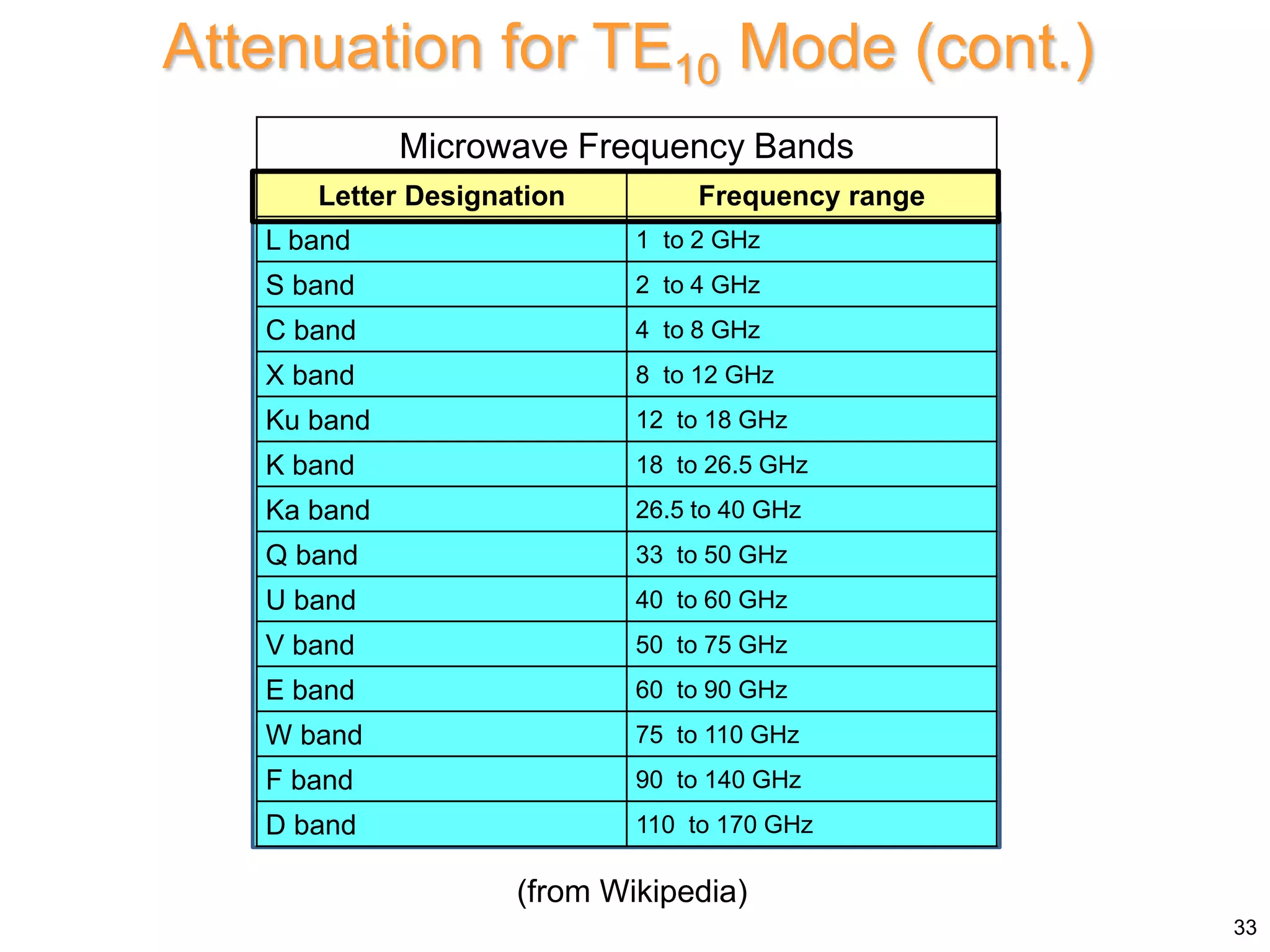
![10
20
01
11
11
30
21
21
TE 6.55
TE 13.10
TE 14.71
TE 16.10
TM 16.10
TE 19.65
TE 19.69
TM 19.69
2.29cm (0.90in)
1.02cm (0.40in)
a
b
Mode fc [GHz]
X : 8 12 [ ]
band GHz
50 mil (0.05”) thickness
Modes in an X-Band Waveguide
“Standard X-band waveguide” (WR90)
34
a
b
1"
0.5"](https://image.slidesharecdn.com/waveguidingstructurespart4rectangularandcircularwaveguide-230228092453-aa7027af/75/Waveguiding-Structures-Part-4-Rectangular-and-Circular-Waveguide-pptx-34-2048.jpg)
![Determine , , and g (as appropriate) at
10 GHz and 6 GHz for the TE10 mode in a
lossless air-filled X-band waveguide.
2 2
0.0397
158.25
g
2
2 2
10
2
8
2 10
2.99792458 10 0.0229
a
@ 10 GHz
Example: X-Band Waveguide
158.25 [rad/m]
3.97 [cm]
g
35
a = 2.29cm
b = 1.02cm
0 0
,
2 2 2
: 2
/
d d d d
f
k f
c f c c
Lossless](https://image.slidesharecdn.com/waveguidingstructurespart4rectangularandcircularwaveguide-230228092453-aa7027af/75/Waveguiding-Structures-Part-4-Rectangular-and-Circular-Waveguide-pptx-35-2048.jpg)
![1/2
1/2 2
2 2
9
2
8
2
2 9
8
2 6 10
2.99792458 10 0.0229
2 6 10
0.0229 2.99792458 10
55.04 [1/m]
z
k
a
j
j
2
g
Evanescent mode: = 0; g is not defined!
@ 6 GHz
Example: X-Band Waveguide (cont.)
55.04 [np/m]
478.08 [dB/m]
36](https://image.slidesharecdn.com/waveguidingstructurespart4rectangularandcircularwaveguide-230228092453-aa7027af/75/Waveguiding-Structures-Part-4-Rectangular-and-Circular-Waveguide-pptx-36-2048.jpg)
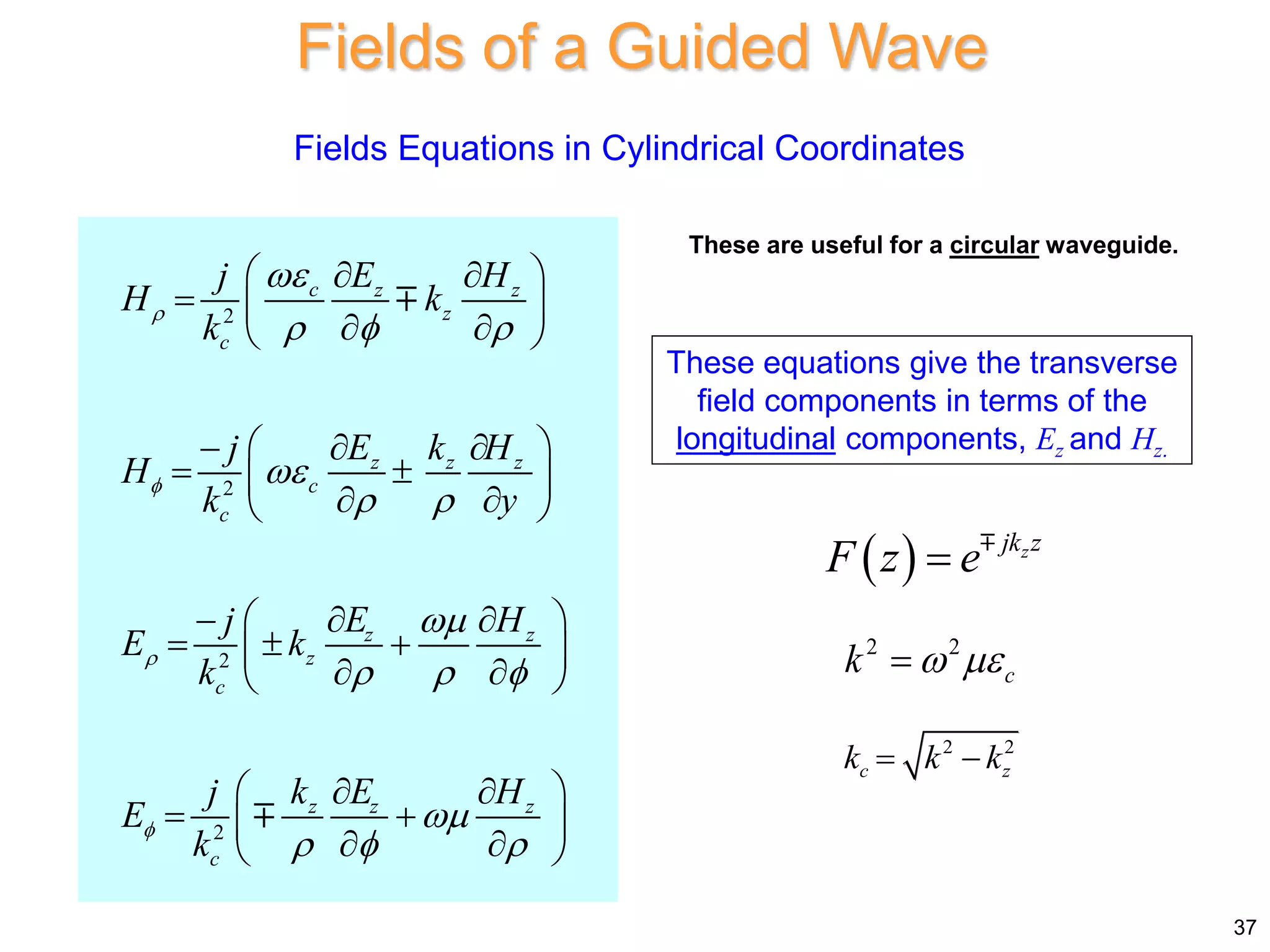
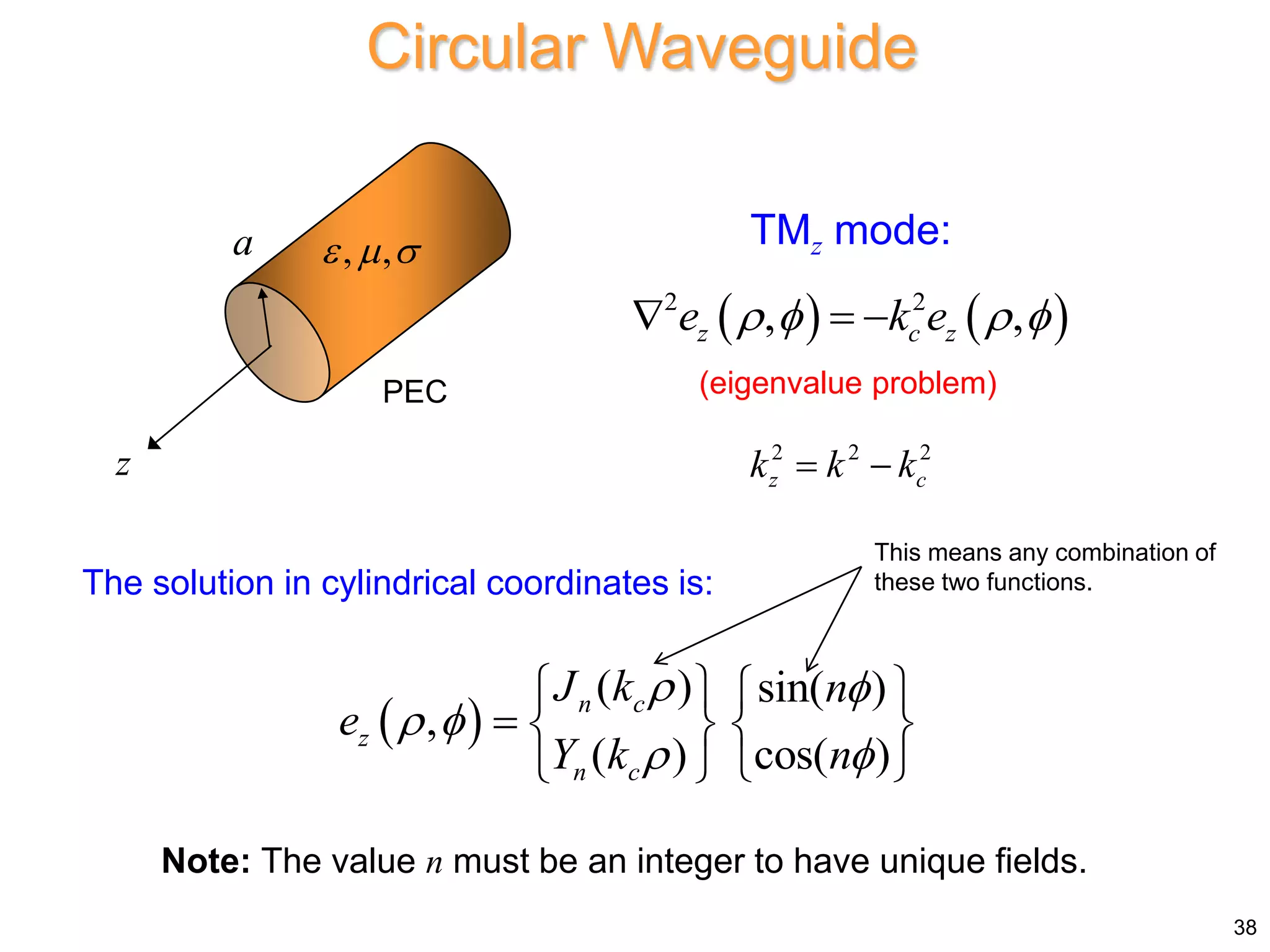
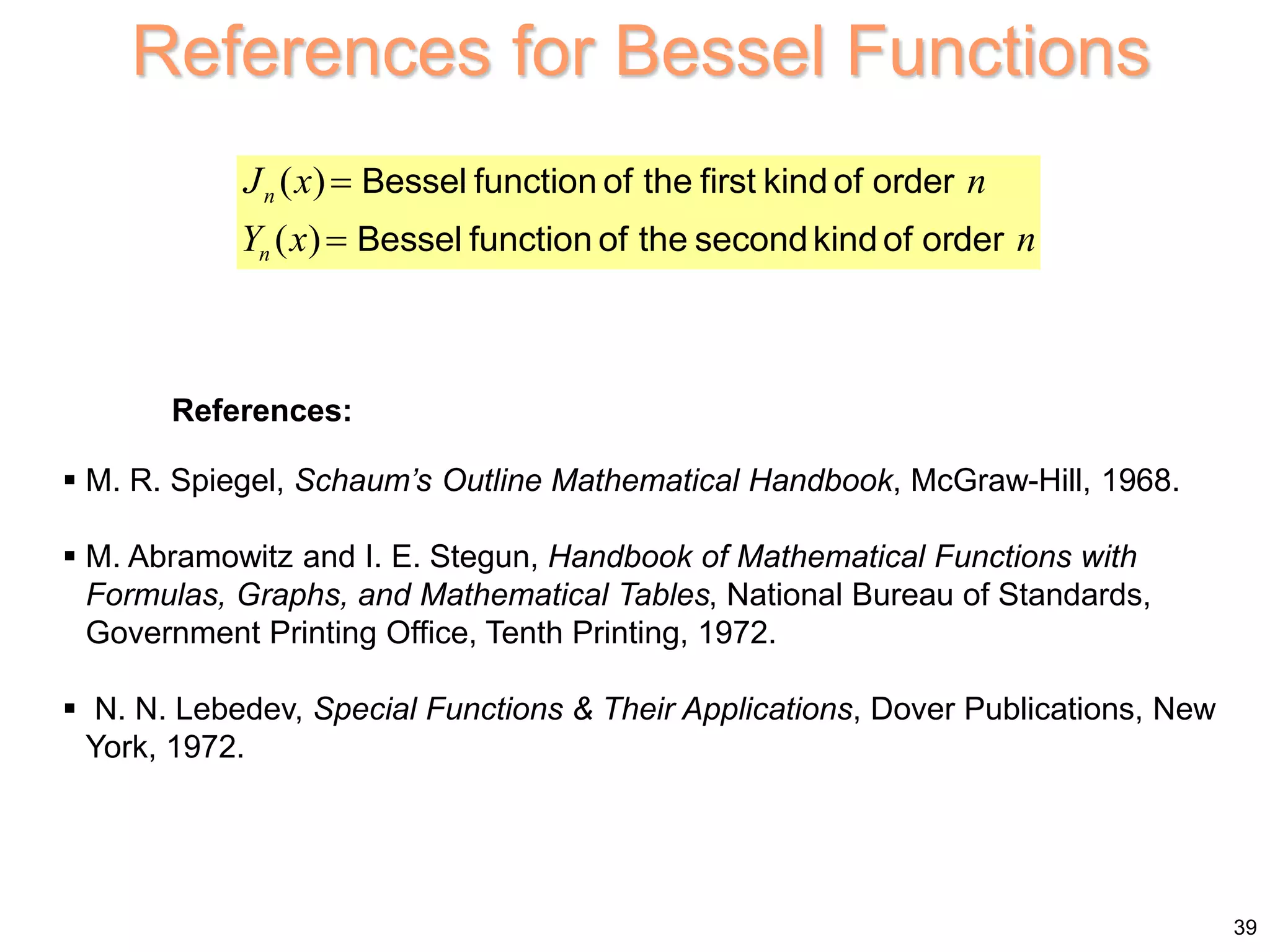
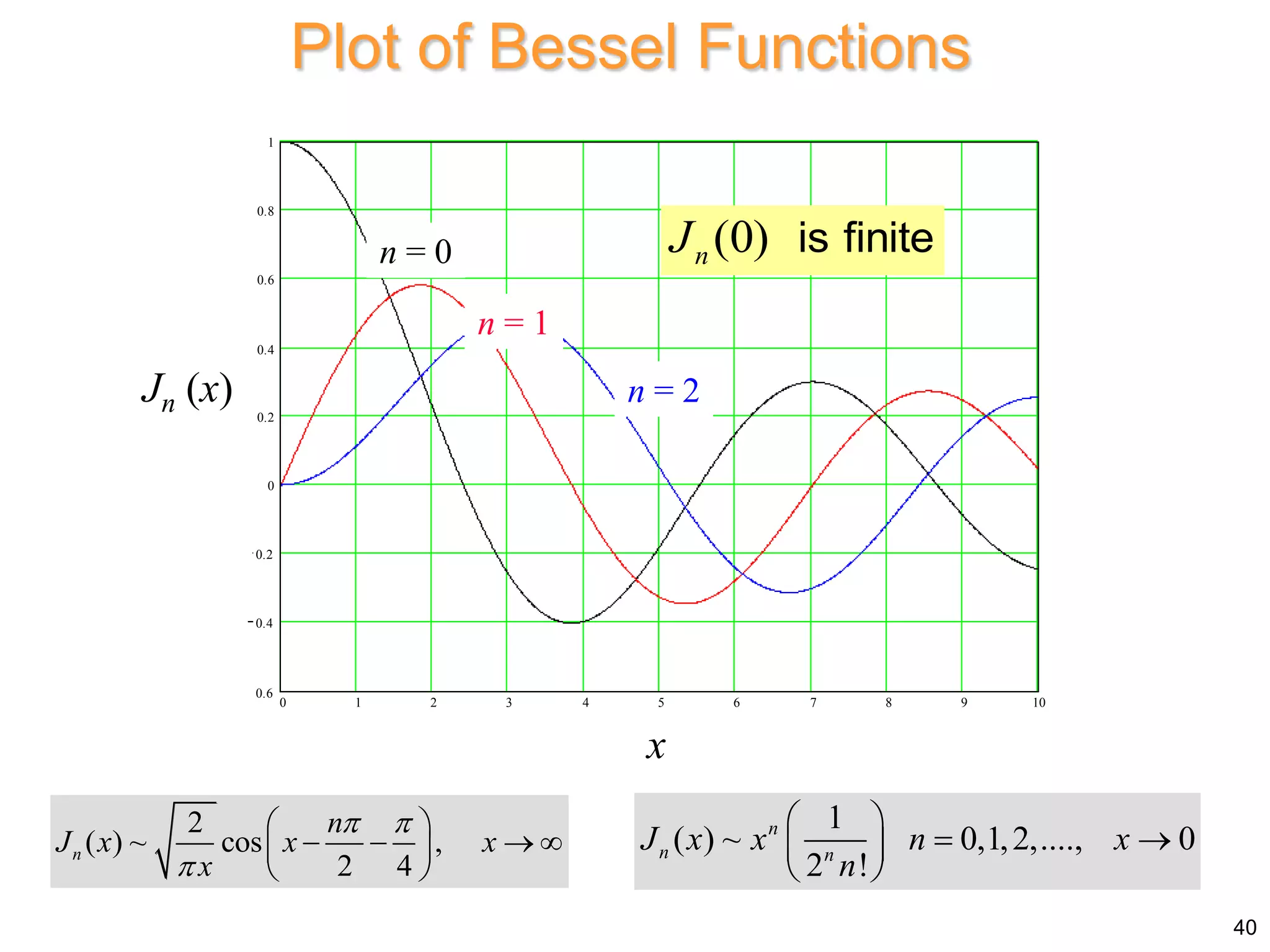
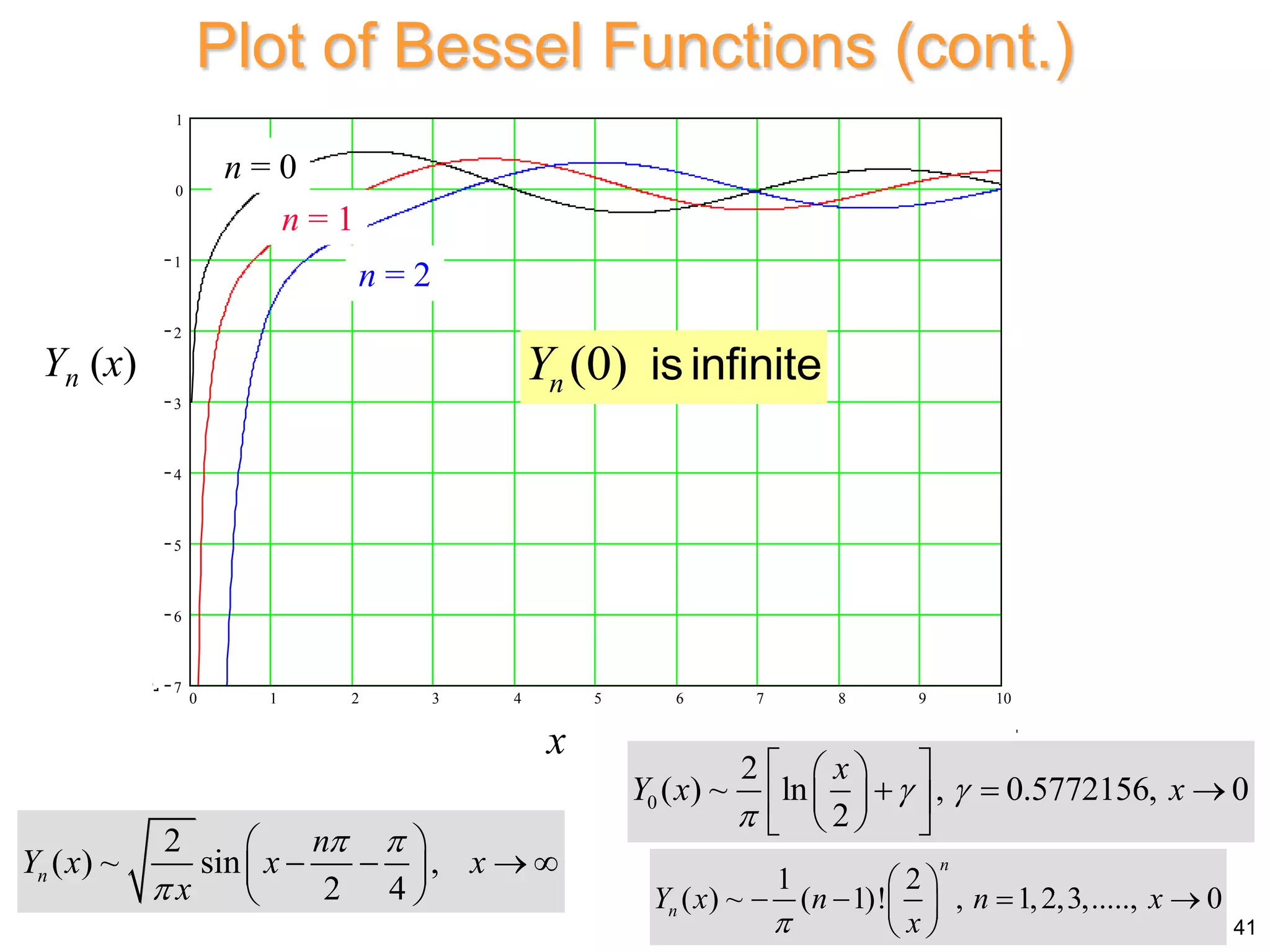
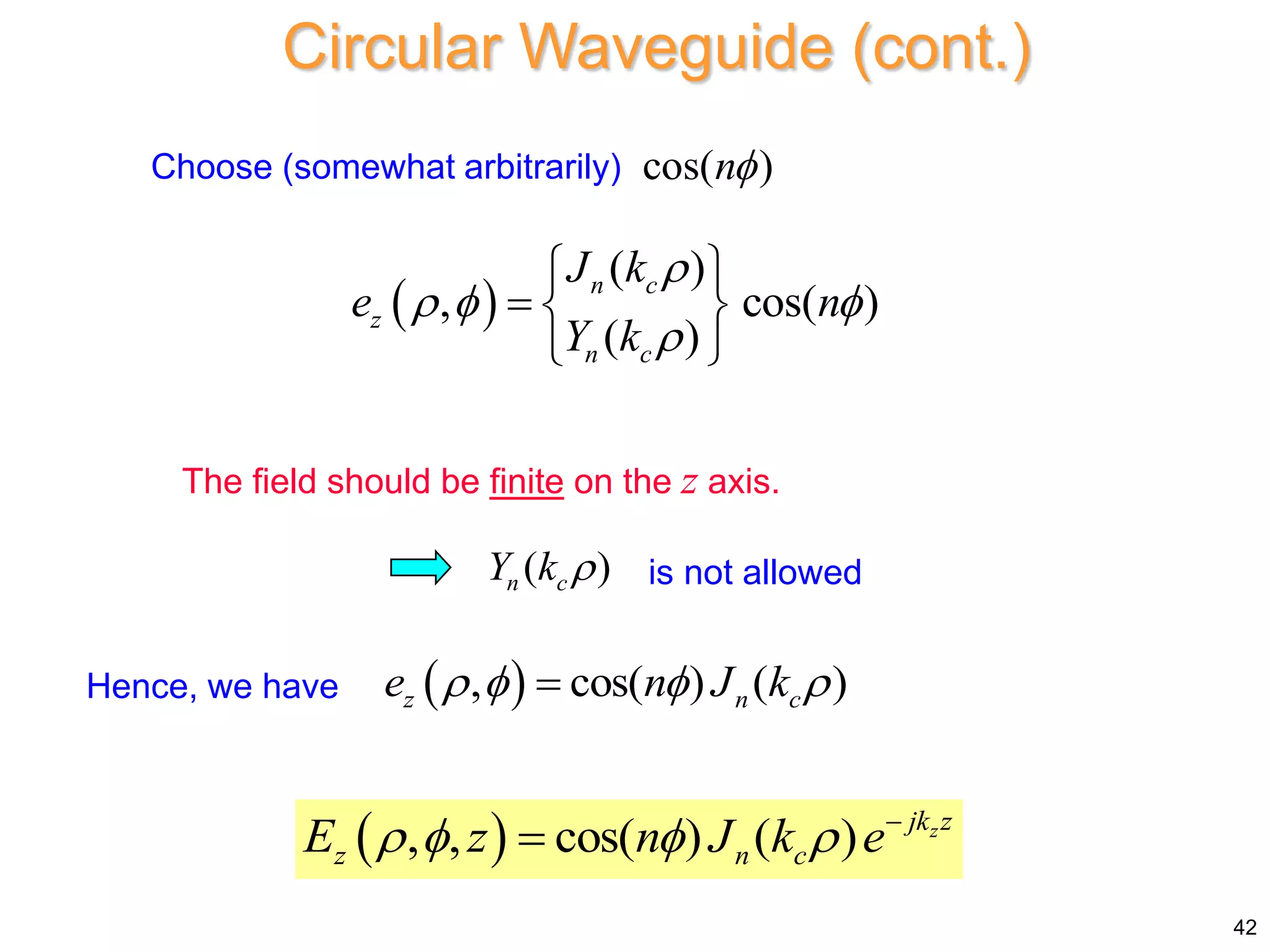
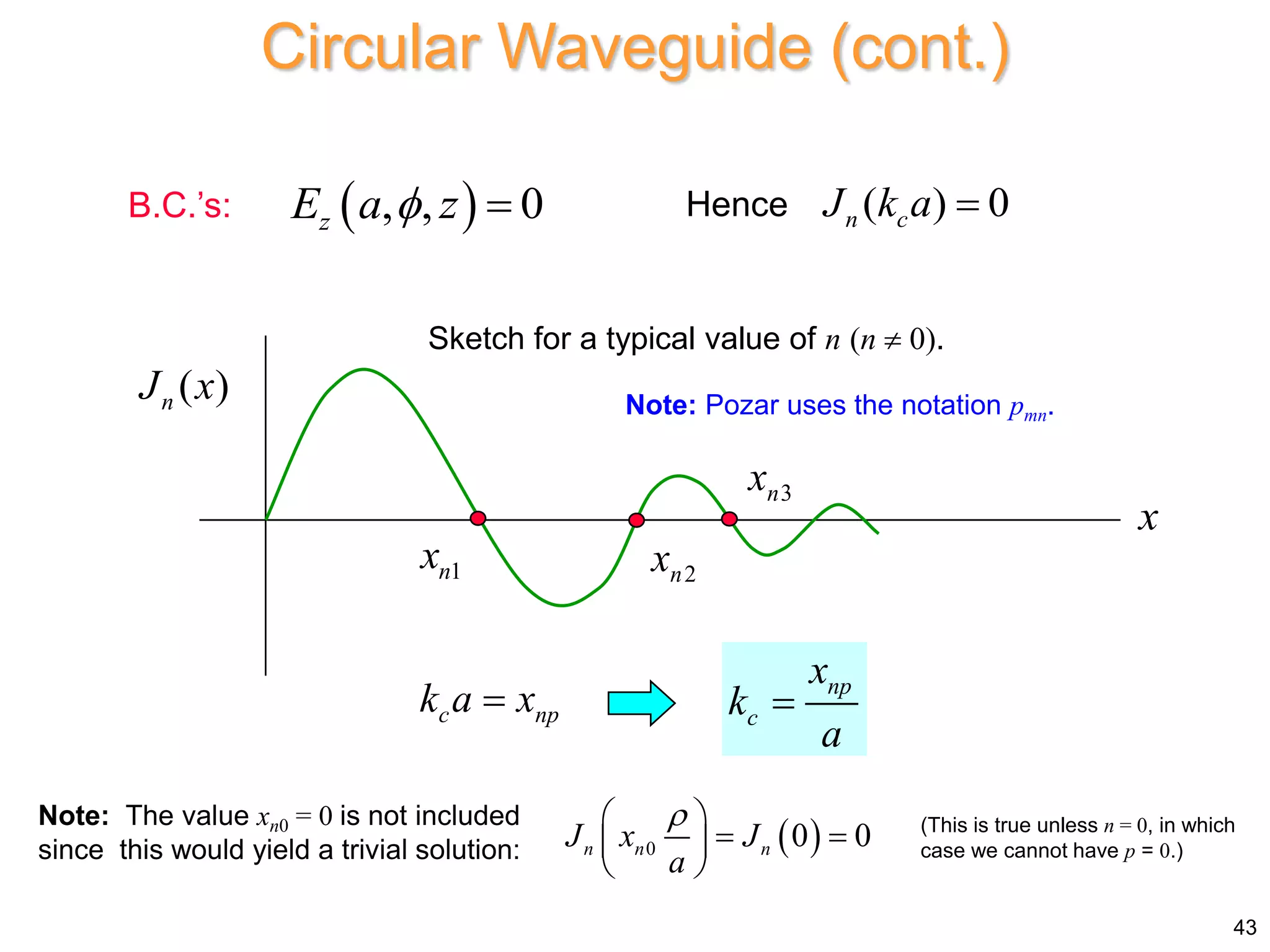

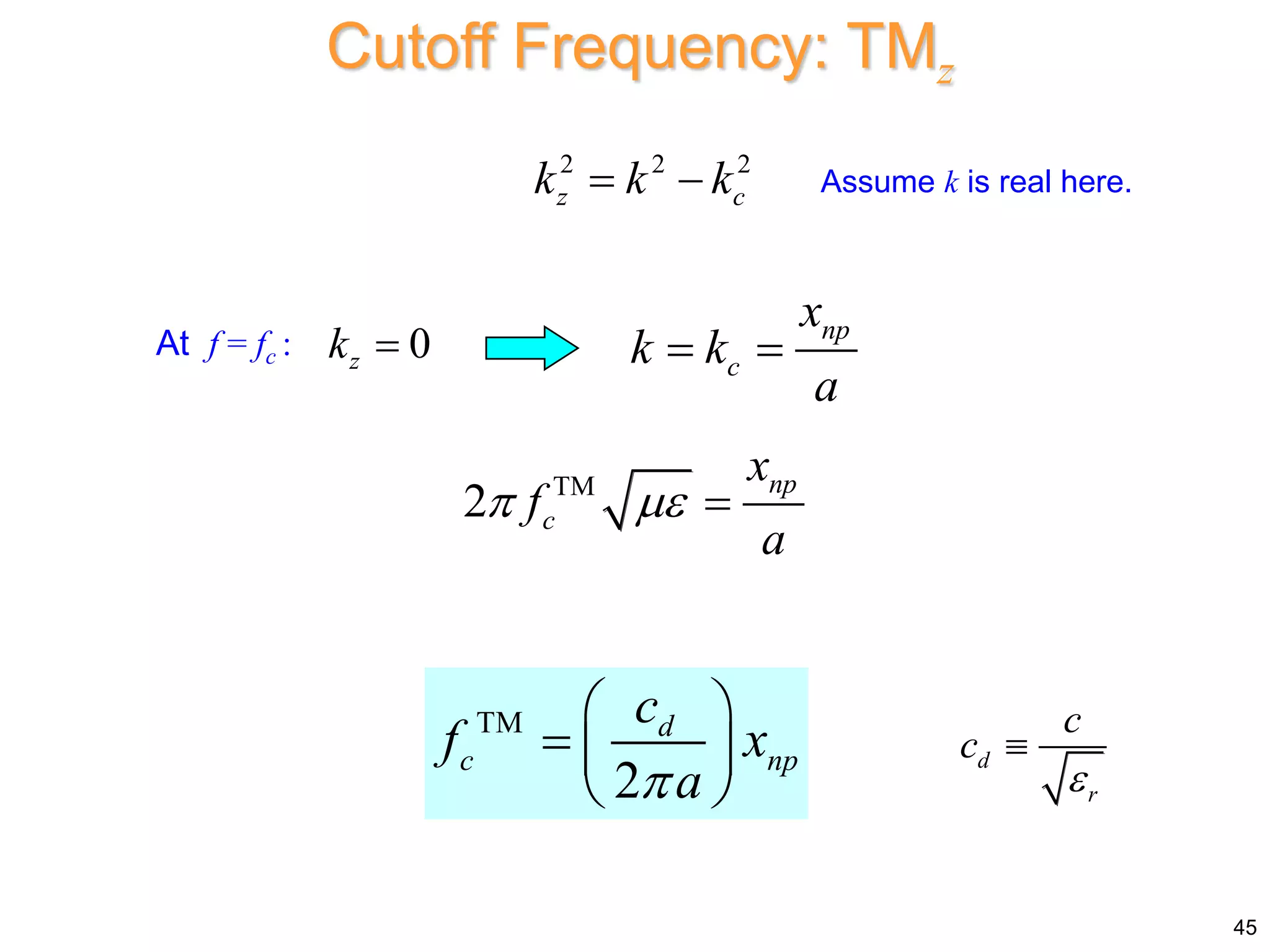
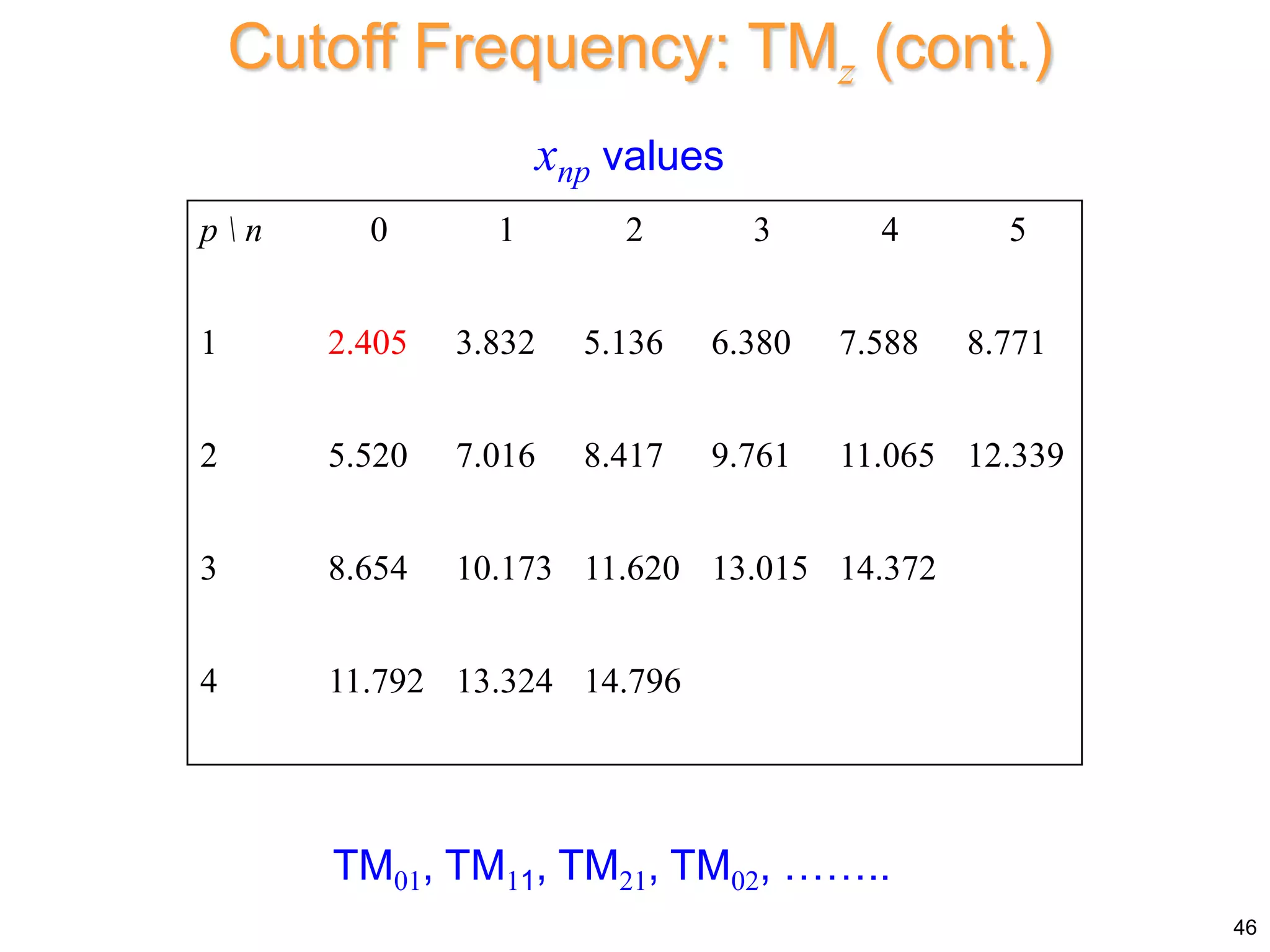
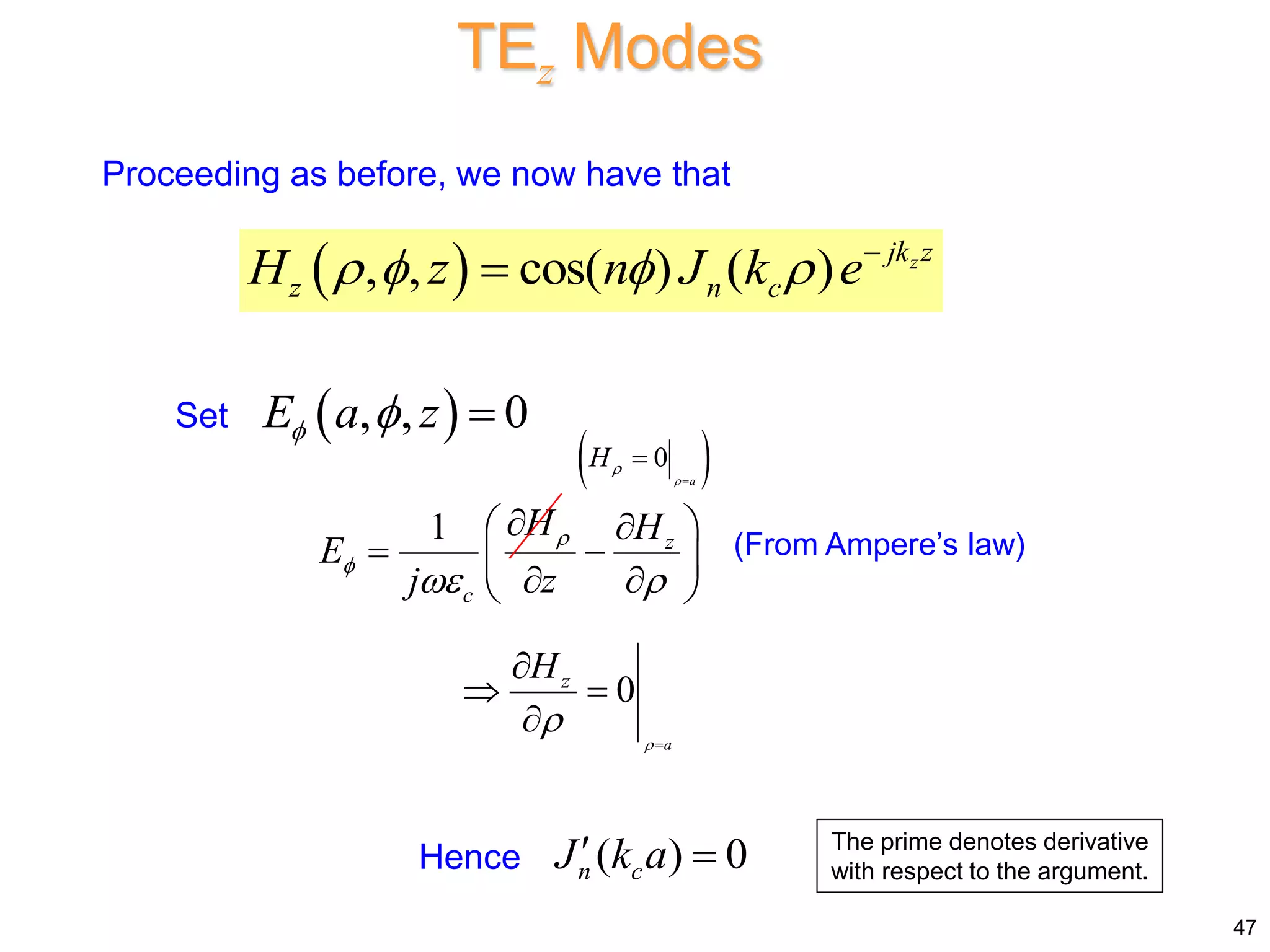
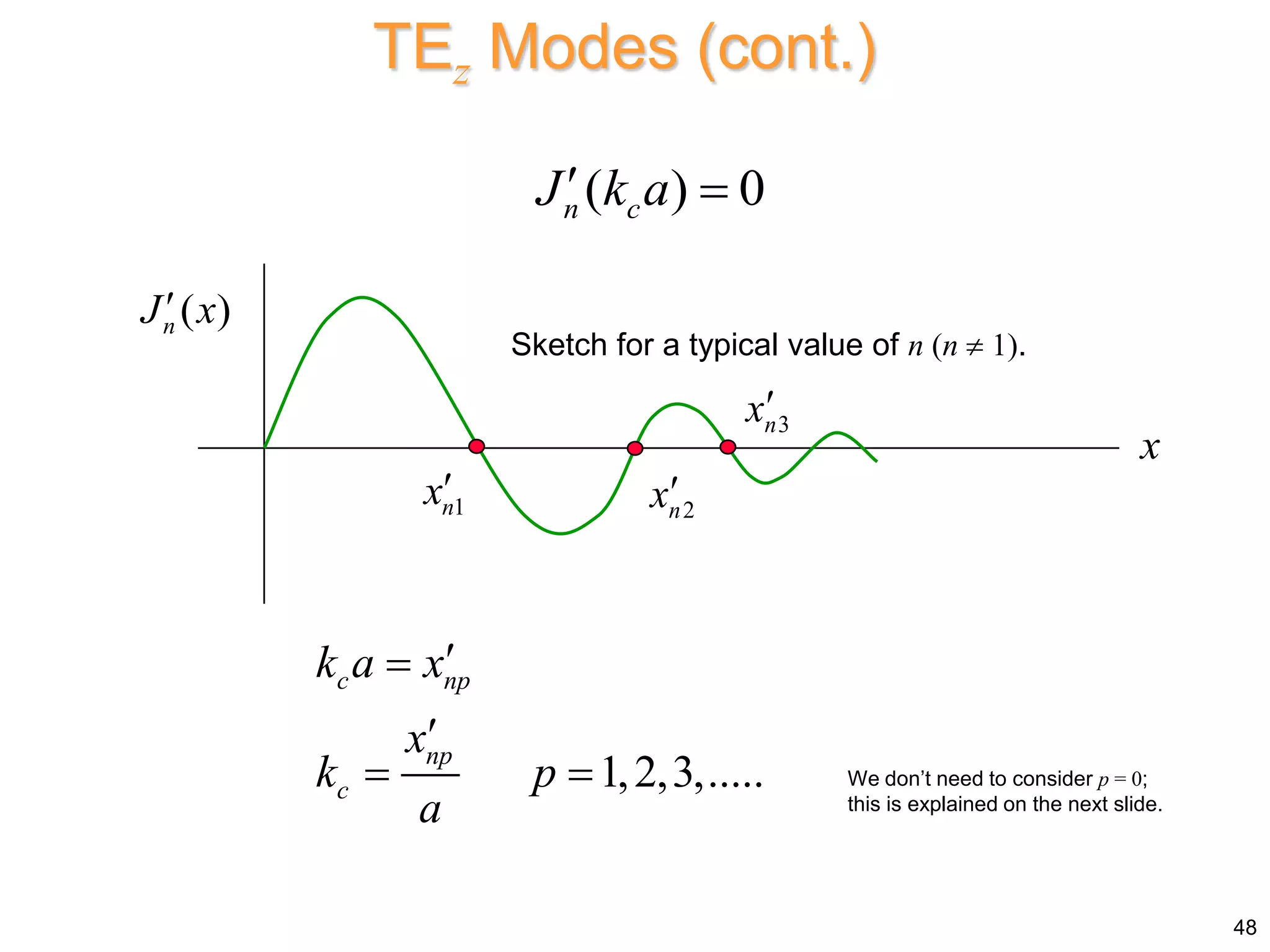

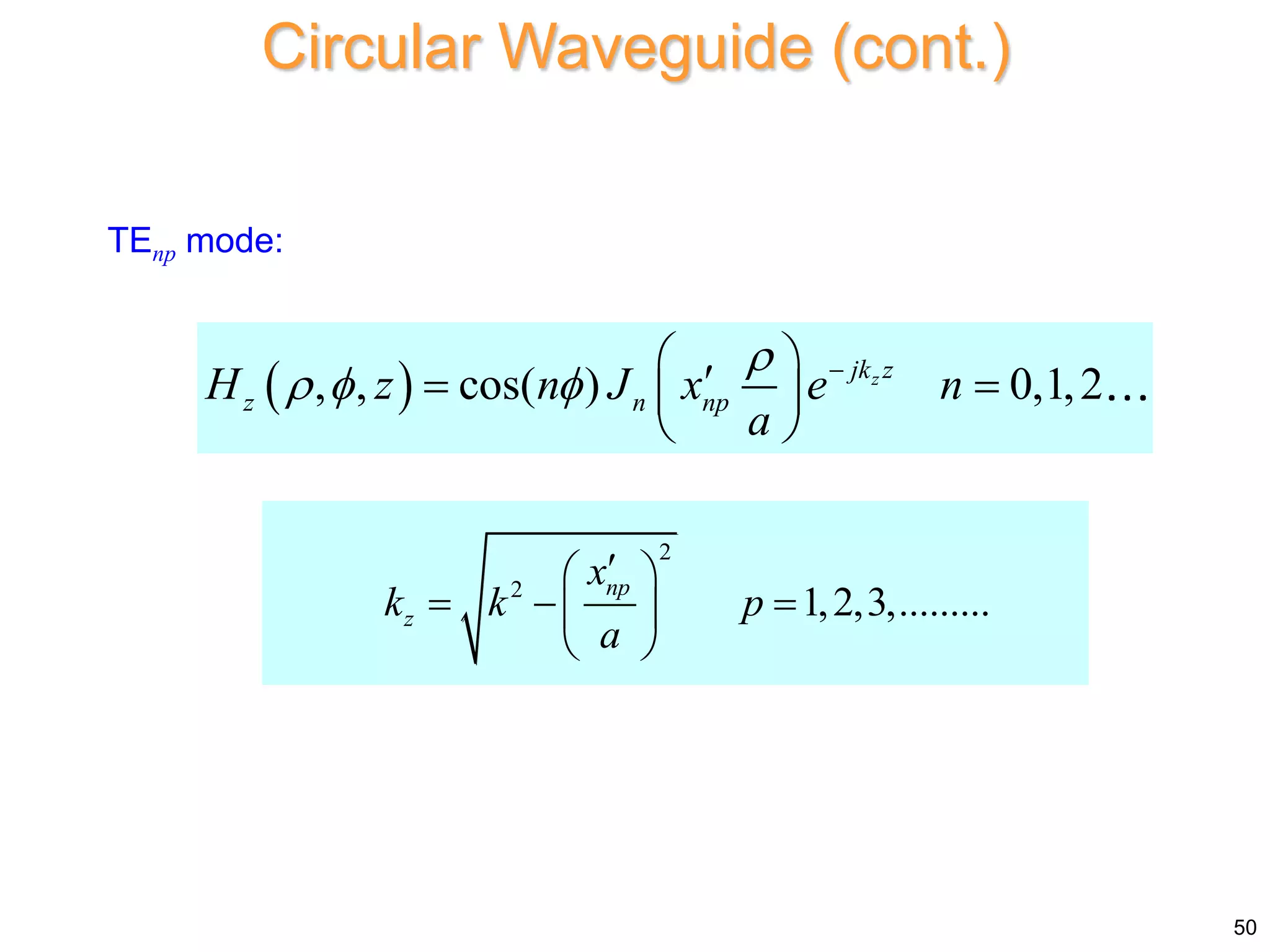
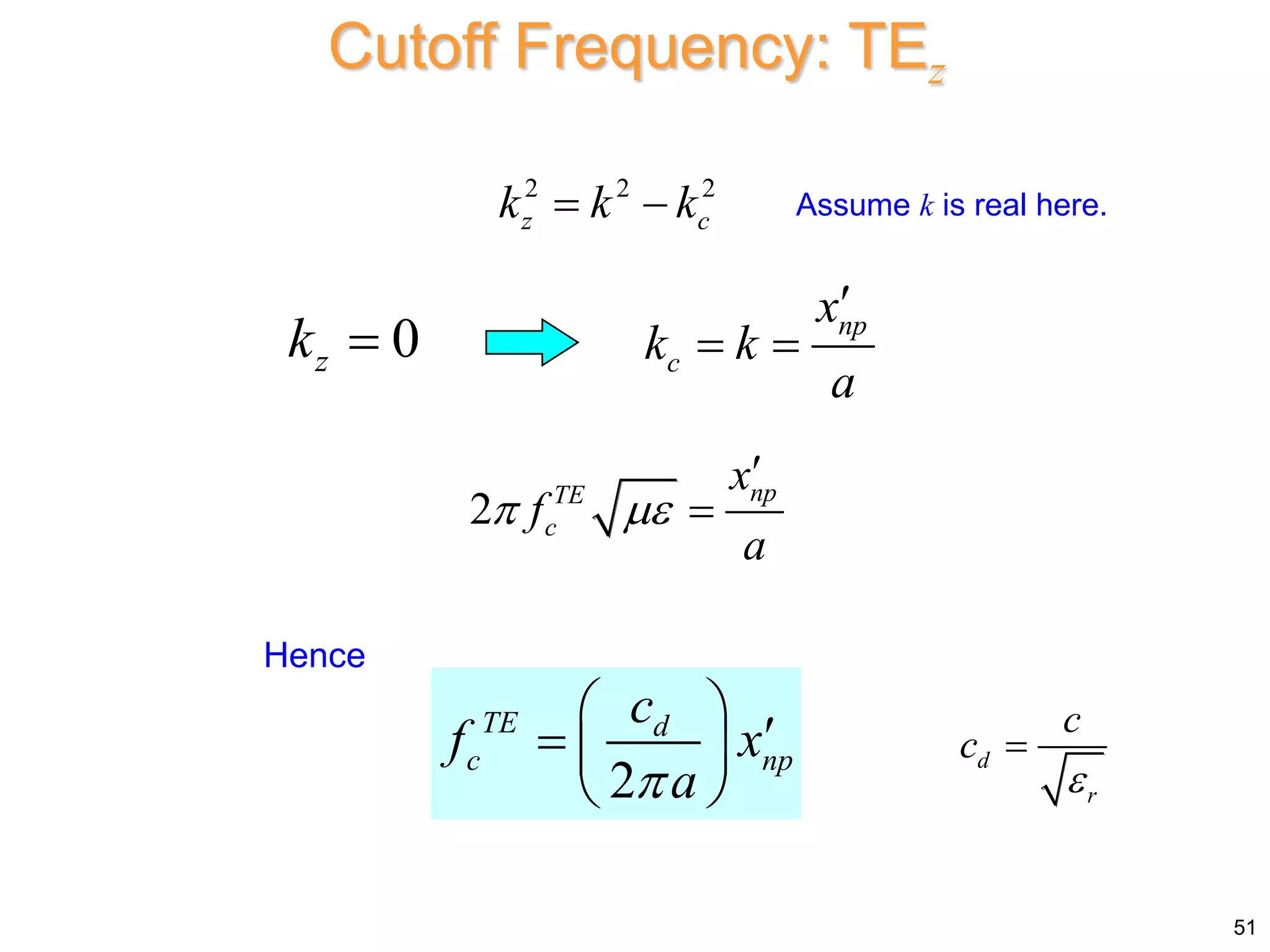
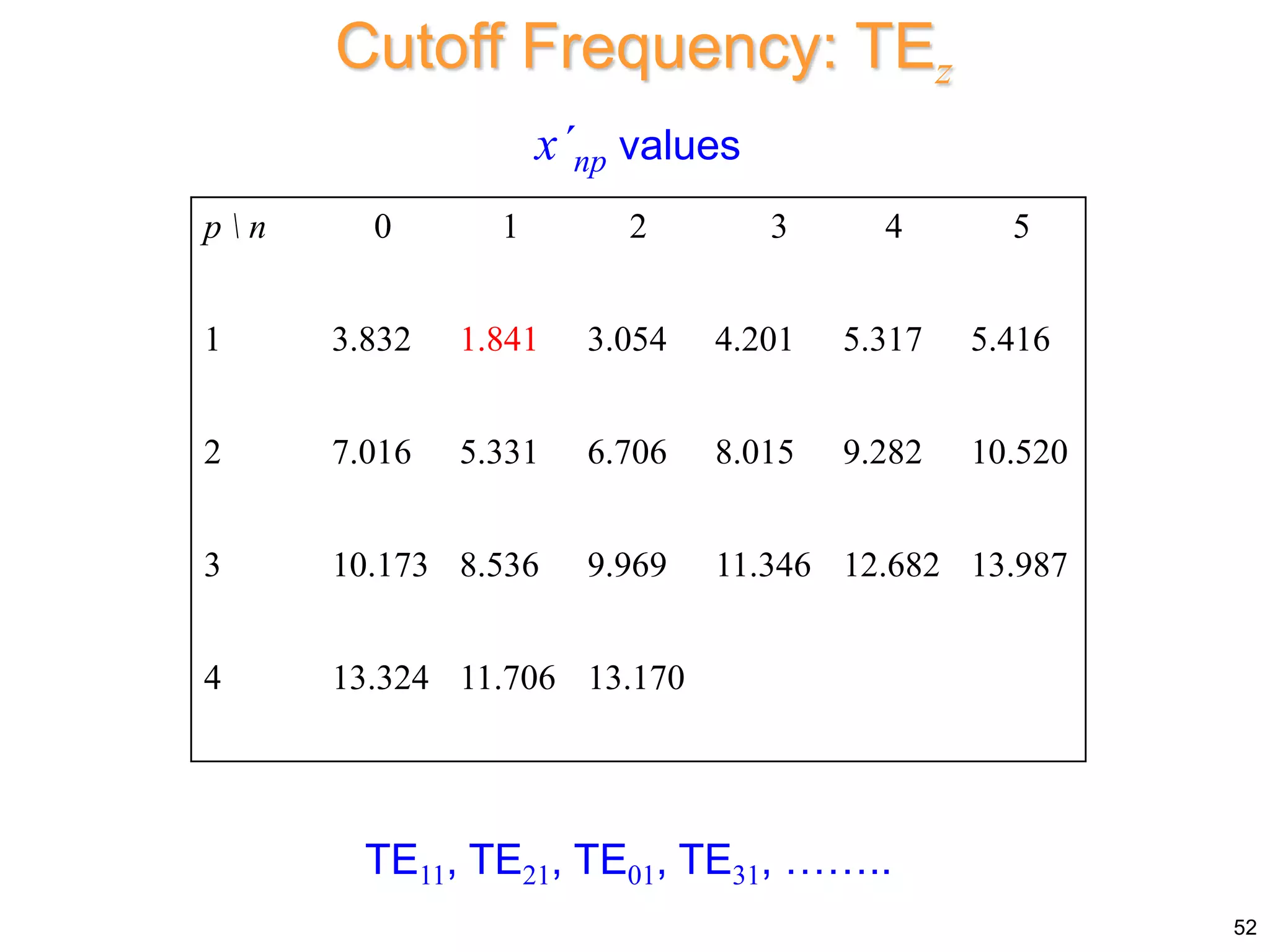
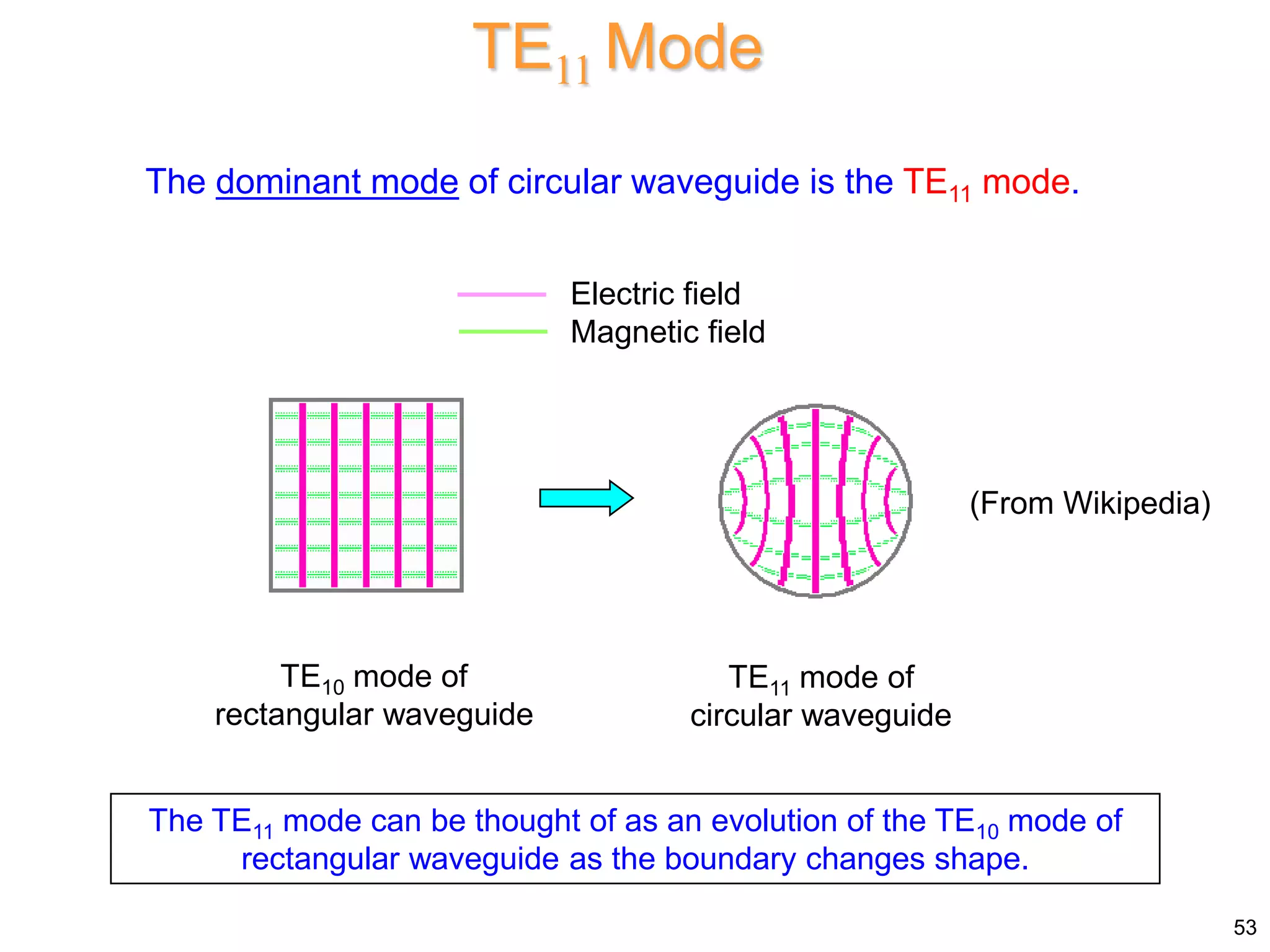
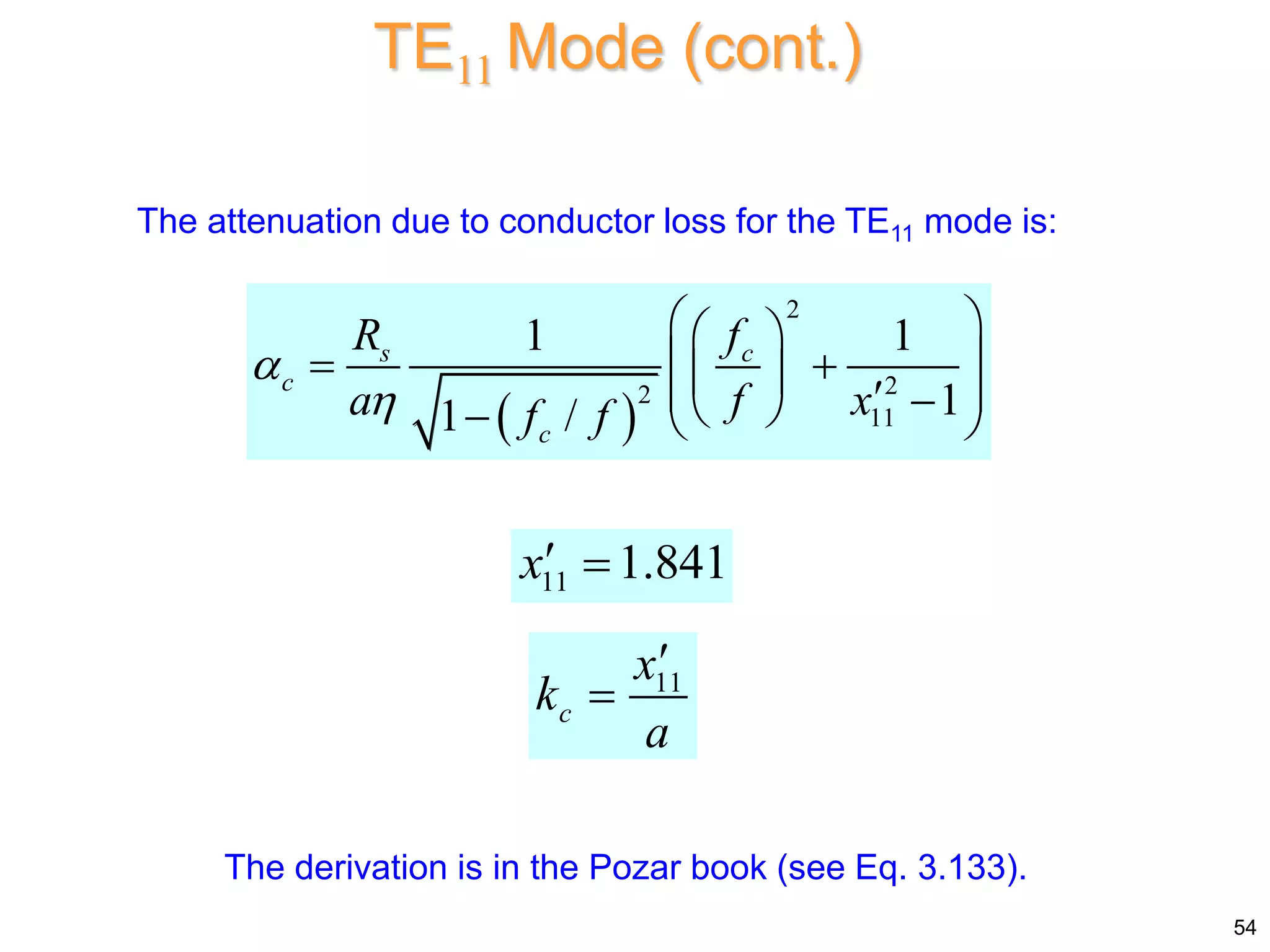
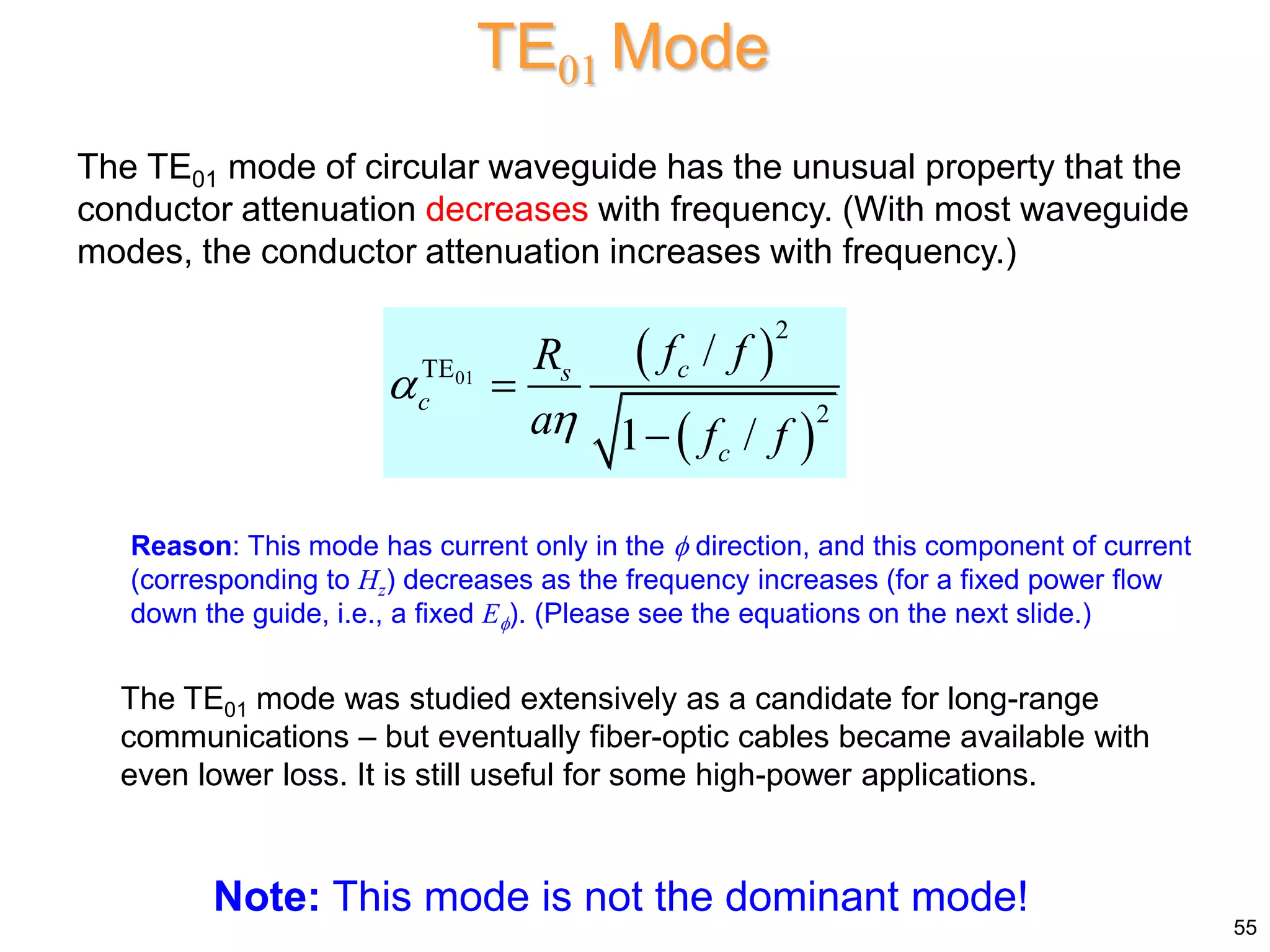
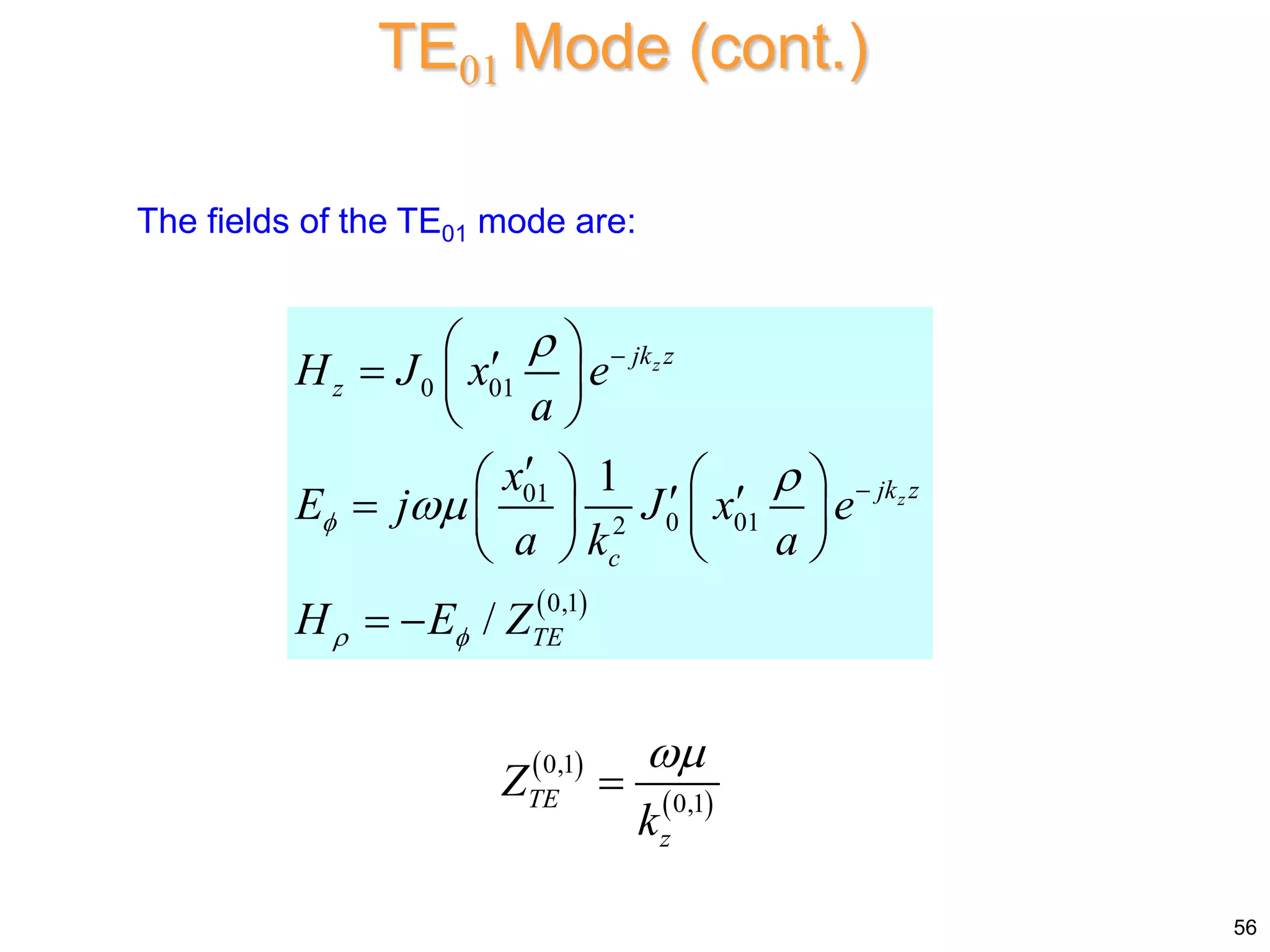
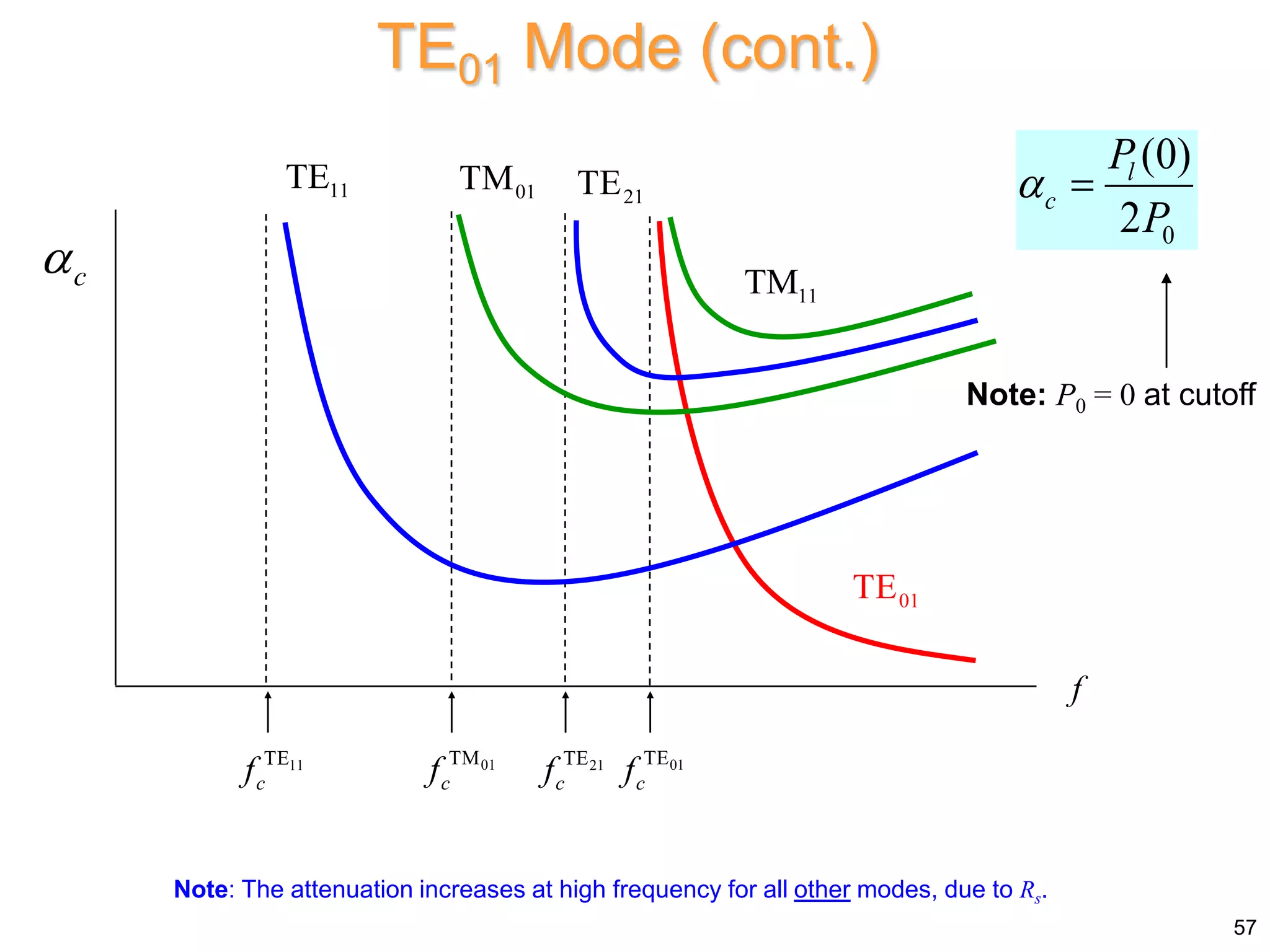

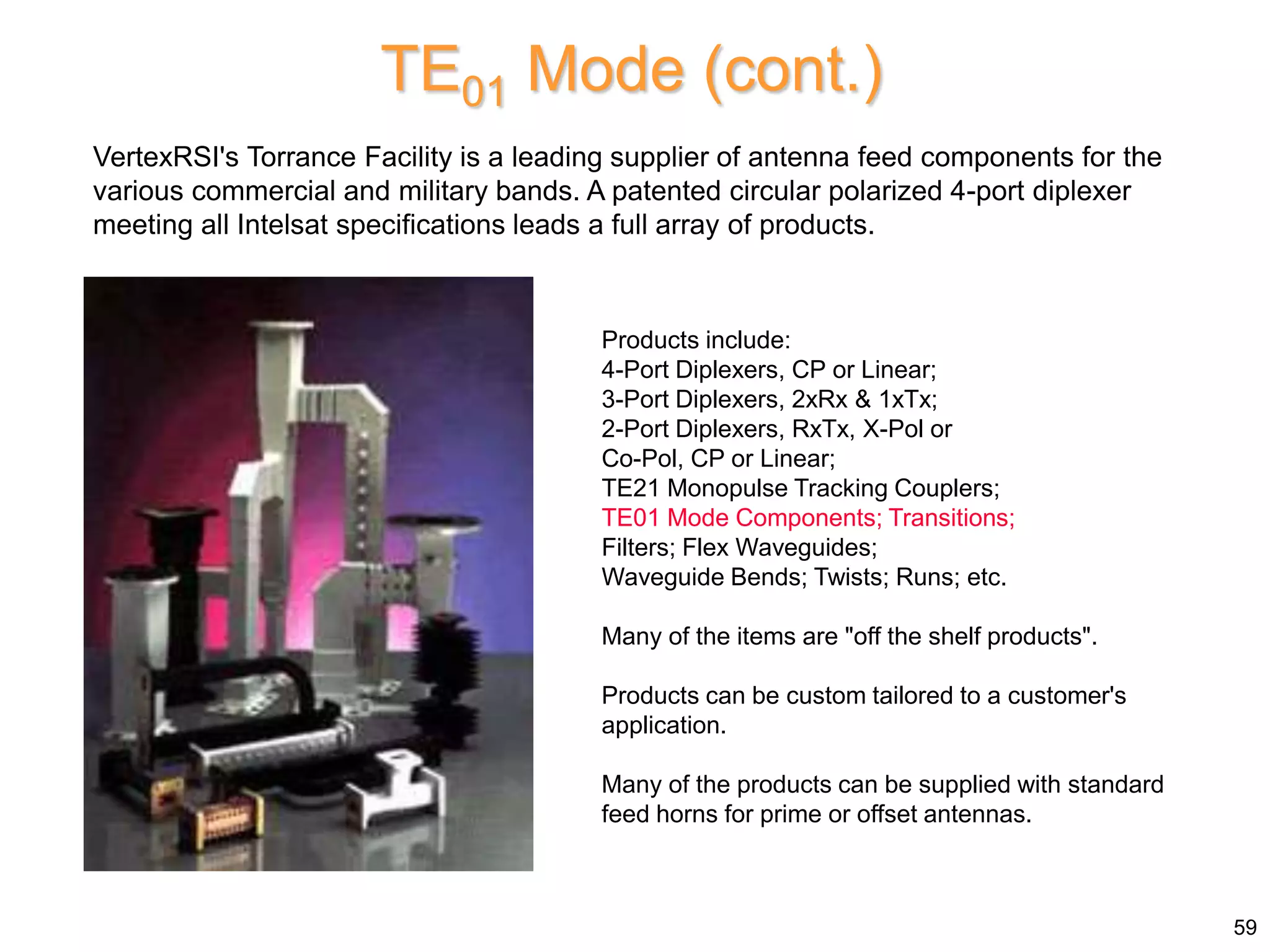
![From the beginning, the most obvious application of waveguides had been as a
communications medium. It had been determined by both Schelkunoff and Mead,
independently, in July 1933, that an axially symmetric electric wave (TE01) in circular
waveguide would have an attenuation factor that decreased with increasing frequency
[44]. This unique characteristic was believed to offer a great potential for wide-band,
multichannel systems, and for many years to come the development of such a system
was a major focus of work within the waveguide group at BTL. It is important to note,
however, that the use of waveguide as a long transmission line never did prove to be
practical, and Southworth eventually began to realize that the role of waveguide would
be somewhat different than originally expected. In a memorandum dated October 23,
1939, he concluded that microwave radio with highly directive antennas was to be
preferred to long transmission lines. "Thus," he wrote, “we come to the conclusion that
the hollow, cylindrical conductor is to be valued primarily as a new circuit element, but
not yet as a new type of toll cable” [45]. It was as a circuit element in military radar that
waveguide technology was to find its first major application and to receive an enormous
stimulus to both practical and theoretical advance.
K. S. Packard, “The origins of waveguide: A case of multiple rediscovery,” IEEE Trans.
Microwave Theory and Techniques, pp. 961-969, Sept. 1984.
TE01 Mode (cont.)
60](https://image.slidesharecdn.com/waveguidingstructurespart4rectangularandcircularwaveguide-230228092453-aa7027af/75/Waveguiding-Structures-Part-4-Rectangular-and-Circular-Waveguide-pptx-60-2048.jpg)
